
- Terms and Conditions, Privacy and Refund Policy
- Driving and Safety Links
- Got in a car accident with uninsured?
- Defensive Driving Blog
- Share the Knowledge
- Defensive Driving Gone Mobile
- Teen Driving Course
- How-to guide for Defensive Driving in Plano
- Testimonials

Chapter 8 – DEFENSIVE DRIVING STRATEGIES
You are here: Home » Chapter 8 – DEFENSIVE DRIVING STRATEGIES
TRIP PLANNING
The following planning tips can be used as a starting place to help you stay safer on the road:
- Plan your trip out in advance.
- Have your vehicle checked out by a qualified mechanic before you leave.
- Wear your seat belt. Seat belts are the most significant safety device ever invented.
- Avoid rush hour traffic if at all possible. This includes traveling during peak hours over major holidays.
- Time your driving for daylight hours only. Poor visibility and fatigue can play a major factor in accidents during the night and twilight hours.
- Alter your travel plans during bad weather or when you experience any adverse driving conditions.
- Choose routes that are well-marked and well-lighted. Make a note of landmarks and exits that can help you navigate.
- Turn on your headlights and buckle up your seat belt every time you drive your car. Using your headlights in the daytime helps other drivers see you.
- Adjust your seat and mirrors for the best visibility.
- Drive at the posted speed limit, unless weather, traffic, or other adverse driving conditions indicate otherwise. If you must drive more slowly, then stay in the right lane.
- Practice good defensive driving techniques and yield the right-of-way. Never insist on the right-of-way, even if you are correct.
- Stay in the appropriate lane. Do not weave back and forth between lanes, straddle two lanes, or change lanes near intersections.
- When coming to an unexpected slow down or stoppage of traffic, especially on highways, turn your flashers on to get the attention of the person behind you.
- Plan on taking a break after driving every 90 minutes. Get out of your vehicle and stretch or take a walk. You can plan driving breaks around meal times as well.
EVALUATING the TRAFFIC ENVIRONMENT
- Keep your concentration focused on the driving task and use your rearview mirrors to stay aware of all situations around you.
- Scan ahead and anticipate potential hazards. People exiting their parked vehicles, intersections where left turns are made without yielding, right turns on red in front of you, children running out from between parked cars are just a few examples of what can cause you to slow down, stop, or alter your path dramatically.
- Obey all traffic signals and signs.
- Be prepared to anticipate the unexpected actions of other drivers.
- Keep your distance. On a dry road and in good weather conditions leave at least a two second gap (the two second rule) between your vehicle and the one in front.
- On wet, slippery roads or in poor visibility leave at least a four second gap (the four second rule).
- Use your signals to communicate your actions to others.
- Take particular care when approaching construction sites. Reduce your speed and obey warning signs.
ANTICIPATING the ACTIONS of OTHERS
Stay alert and anticipate the other driver to do the unexpected and know how to safely react to each move.
- Keep a cushion of space around your vehicle. Have a plan of action and the space around you to allow yourself to make a maneuver to avoid a crash.
- Have a plan of action. For example, if a driver turns his/her head, expect them to turn. Be prepared to slow down.
- To anticipate whether or not a vehicle is about to move, watch the front wheels, they will be the first to move, sometimes before the driver has even decided they are going to accelerate.
Be alert to drivers with out-of-state plates or rental cars, as well as drivers who have a map out or their interior lights on. These drivers may not be familiar with the area, and thus may be confused or distracted.
Rental trucks like U-Haul are rented by people who don’t have a truck but need to move items. Anticipate these people to make maneuvers more like a car and not a huge, long truck.
Keep a safe distance, whenever possible, behind trucks with cargo that could easily spill onto the road. These vehicles could send debris flying into your line of travel, or into the path of those around you.
Look out for drivers backing up into the road from a driveway or parking lot, as these drivers may have a limited field of vision.
DECISION MAKING
Every time we get behind the wheel of our vehicles we are bombarded with decisions to make, both consciously and unconsciously. We make an array of decisions before we even start the engine; seat position, adjusting the mirrors, fastening the seat belts and making sure everyone has got their seat belts fastened is just the beginning.
Once we get on the road the decisions we make happen faster and more frequently. Although a lot of these decisions are reflex, different situations can present themselves requiring you to make decisions that are not part of your regular routine. When these happen, remember you have options you may not have considered.
Depending on the situation, you may have the option to:
- Change lanes
- Stop altogether
- Steer around an obstacle in your path
IMPLEMENTING NECESSARY MANEUVERS
Even with our best efforts, sometimes driving situations require us to make quick maneuvers to avoid a crash. Once a situation has been identified, you must decide what driver action you will implement (accelerate, steer, decelerate, or any combination of these vehicle control maneuvers) to avoid a crash with a real (or potential) hazard. This will require good judgment, time and space to implement the “decided upon” control maneuver. Be certain that your chosen escape path is still available and access space is available. If you have to implement a “less desirable” emergency avoidance maneuver, leaving the roadway may be an option.
Carry out your decided-upon action. This process might range from gently moving toward the left portion of your lane when approaching a vehicle parked on the side of the roadway for repairs (a driver changing a flat tire) to implementing an emergency avoidance maneuver. Generally, your skill in implementing avoidance maneuvers will increase with driving experience.
COMPENSATING for the MISTAKES of OTHER DRIVERS
Expect the other driver to do the unexpected and be prepared for it.
- Scan the road ahead
- Use extra caution during inclement weather.
- Maintain a safe following distance. One of the biggest causes of accidents is following too close. Use the two second rule.
- Yield the right-of-way.
- Use caution when turning and changing lanes. Signal your intentions early, and use your mirrors to monitor traffic around you.
If the driver behind you is tailgating you, they are limiting your safety cushion. You cannot quickly slow down or stop effectively with them on your rear bumper. Do not panic when you have someone tailgating you, stay calm and try the following:
- Safely change lanes.
- Slow down and let them around you.
- Tap your brakes lightly to let them know they are too close.
AVOIDING COMMON DRIVING ERRORS
AGGRESSIVE DRIVING
Aggressive driving is a factor in about 56 percent of fatal crashes, says the latest study on driving habits from the Surface Transportation Policy Partnership. Though subject to debate, the study has classified aggressive driving as “speeding, tailgating, failing to yield, weaving in and out of traffic, making improper and unsafe lane changes and running stop signs and red lights.” The group says that most drivers admit to making the same mistakes they hate to see other drivers commit.
MOBILE DEVICES
People who send text messages while driving are 23 times more likely to be in a crash (or what they call a near-crash event) than non-distracted drivers.
The National Safety Council estimates about 28 percent of crashes, or 1.6 million a year, result at least in part from drivers talking or texting on cell phones.
In crashes or near-crashes, texting took a driver’s focus away from the road for an average of 4.6 seconds–enough time, the report point out, to travel the length of a football field at 55 mph.
As a group, teenagers are more likely than most to take their eyes off the road to concentrate on mobile devices, including cell phones, iPods and instant messaging gadgets. They are also the age group most likely to impress their friends both with the latest in gadgetry and by taking risks behind the wheel. The National Safety Council points out that traffic crashes are the leading cause of fatalities in teens, accounting for 44 percent of deaths.
Texas becomes one of the last states to adopt a ban on texting and driving. A number of Texas cities have adopted their own texting and driving laws but this State law would pre-empt any city laws already in place regulating mobile devices and driving. The state law will cover only texting and will prohibit a driver from using hand held devices to “read, write or send electronic messages.” The law makes texting while driving within the state punishable by a fine of $25-$99 for 1 st offenders and $100-$200 for repeat offenders. It does not address “hands-free” issues that are outlined in some city laws. Texas does forbid cell phone use in school zones and by bus drivers.
Current prohibitions:
- Learners permit holders are prohibited from using handheld cell phones in the first six months of driving.
- Drivers under the age of 17 with restricted licenses are prohibited from using wireless communications devices.
- School bus operators prohibited from using cell phones while driving if children are present.
- Drivers prohibited from using handheld devices in school crossing zones.
- Dallas, Austin, Galveston, El Paso, Missouri City and Stephenville have enacted local distracted driving laws.
Check with your city for current regulations.
Some other common driving errors that can be avoided are:
Failure to Yield Right of Way
- Driving While Upset
- Pushing the Wrong Pedal
- Speeding and Tailgating
- Not Wearing Seatbelts
- Driving While Tired
- Don’t go in the Water: If there is any water in the road, check how deep it is before trying to cross. And don’t be fooled into thinking that a four-wheel drive truck can act like a duck boat. Twelve inches of water will float many cars.
- Check your tires regularly-underinflated tires are dangerous. Tires should always be at the pressure specified in your car owner’s manual.
- Be seen; don’t wait for rain or nightfall to turn on your lights. If your car doesn’t have daytime running headlights, put them on and keep them on.
INTERACTION with OTHER ROAD-USERS
MOTORCYCLES and MOPEDS
Motorcycles are vehicles with the same rights and privileges as any vehicle on the roadway. Approximately one half of all motorcycle crashes involve another vehicle. Motorcycles are small and may be difficult to see. Since motorcycles have a much smaller profile than other vehicles, they can be more difficult to judge the speed and distance of an approaching motorcycle.
There are several reasons why drivers may not see the motorcyclist coming:
- Motorists tend to look for other cars, not motorcycles.
- Motorcycles have a much smaller profile than the profile of larger vehicles. This makes an approaching motorcycle harder to see. Estimating their distance and oncoming speed is also more difficult.
- Since motorcycles are small, they may be difficult to see.
- Motorcycle riding requires frequent lane movements to adjust to changing road conditions like potholes, sewer covers, debris and large cracks in the pavement.
Motorcyclists often (but not always) have loud mufflers. They are trying to increase their visibility to drivers; if you can’t see them, maybe you will hear them and know they are there. A driver’s failure to yield the right-of-way is consistently one of the leading causes of motorcycle accidents and fatalities each year. Most drivers, when they are in a situation where they must yield the right of way, are looking for vehicles in traffic rather than motorcycles. When they don’t see a vehicle, they assume it is safe to go. Drivers need to pay extra attention for motorcyclists in these high risk situations:
- Left Turns – The most common crash between cars and motorcycles is at an intersection when the automobile driver is making a left turn in front of a motorcycle, Over 40% of all motorcycle crashes occur at intersections. Nearly 66% of those crashes were caused by the vehicle turning left in front of the motorcyclist.
- Car’s Blind Spot – Motorcycles are often hidden in a vehicle’s blind spot or missed in a quick look due to their smaller size. Always make a visual check for motorcycles by checking mirrors and blind spots before entering or leaving a lane of traffic and at intersection.
- Hazardous Road Conditions – Road conditions which are minor annoyances to you may pose a major hazard to motorcycles. Motorcycles may change speed or adjust their position within a lane suddenly in reaction to road and traffic conditions such as gravel, wet or slippery surfaces, pavement seams, railroad crossings, grooved pavement and the other conditions mention earlier.
- Weather Conditions – When the road surface is wet or icy, motorcyclists’ braking and handling abilities are impaired. It doesn’t have to be raining, drainage or overflowing sprinklers can affect motorcyclists’ braking and handling.
- Strong Winds – A strong gust of wind can move a motorcycle across an entire lane if the rider isn’t prepared for it and wind can’t be seen. Wind gusts from large trucks in the other lane can be a real hazard.
- Large Vehicles – A large vehicle such as a van, bus, or truck can block a motorcycle from your view. The motorcyclist may seem to suddenly appear from nowhere.
TxDOT’s statewide “Share the Road” motorcycle safety and public awareness campaign urge motorists to look twice for motorcycles at intersections and when changing lanes, the two places where serious motorcycle collisions commonly occur.
Despite less traffic on the road in 2020 and a 2% reduction in motorcycle crashes, safety officials are alarmed by a 17% increase in Texas motorcycle fatalities compared to 2019. On average, a motorcyclist is killed in a crash on Texas roads every day—last year 482 died. Motorcyclists account for 12% of all traffic fatalities statewide. One thing Texas has done to try to lower those numbers was to pass a law requiring footrests and hand holds on motorcycles designed to carry a passenger.
Researchers point to the fact that the number of motorcycles on Texas roadways has more than doubled to 443,856 in the last decade and is expected to double again in the next four years. Here is what you can do to help make the streets and roads safer for everyone:
- Look out for motorcyclists. Be aware that although you may not see any cars, there may be an unnoticed motorcycle. Be careful at intersections, and always take a second look (and listen) for a motorcycle before making a turn at an intersection, especially when making a left turn.
- Anticipate a motorcyclist’s maneuvers – Motorcyclists may have to change positions in the lane to respond to road conditions, weather, or other factors. Expect and allow room for them to make those adjustments.
- Signal your intentions – Always signal before changing lanes or merging with traffic. This allows the motorcyclist to anticipate traffic flow and find a safe lane position. Signal even if you don’t see cars or motorcycles in front or behind you. Be particularly careful when making left turns across lanes of approaching traffic. Look carefully in all directions for approaching motorcyclists. Don’t be fooled by flashing turn signals on a motorcycle. Usually, motorcycles don’t have self canceling turn signals and riders sometimes forget to turn them off. Wait to be sure the motorcycle is going to turn before proceeding.
- Respect a motorcycle – Allow the motorcyclist a full lane width. Although it may seem though there is enough room in the traffic lane for an automobile and a motorcycle, the motorcycle is entitled to their full lane and they may need the room to maneuver safely. DO NOT ATTEMPT TO SHARE THE LANE WITH THE MOTORCYCLE.
- Allow plenty of space when following a motorcycle – The slightest contact can mean a spill and/or injury for the rider. Allow more following distance, three or four seconds, when following a motorcycle so the motorcyclist will have enough time to maneuver or stop in an emergency. In dry conditions motorcycles can stop more quickly than a car.
BICYCLE LAW and SAFETY
A bicycle is a vehicle and any person operating a bicycle has the rights and duties applicable to a driver operating a vehicle unless by the nature of the law cannot apply to bicycles (40 mph for example).
- A bicyclist should always obey all traffic laws, signs, and signals.
- Never ride opposite the flow of traffic.
- A bicyclist is required to stop at all signs and stop at red lights.
A person operating a bicycle on a roadway who is moving slower that the other traffic on the roadway shall ride as near as possible to the right curb or edge of the roadway (or to the left curb on a one way street) unless:
- The person is overtaking and passing another vehicle proceeding in the same direction.
- The person is preparing for a left turn at an intersection or onto a private road or driveway.
- There are unsafe conditions in the roadway such as fixed or moving objects, parked or moving vehicles, pedestrians, animals, potholes, or debris.
- The lane is too narrow for a bicycle and a motor vehicle to safely travel side by side.
Persons riding two abreast cannot impede the normal flow of traffic and must ride in a single lane.
Nighttime riders must have:
- A lamp on the front that shall omit a white light that can be seen at least 500 feet in front of the bicycle.
- A red reflector on the rear which shall be visible from distances 50 to 300 feet.
The three most common car-bicyclist crashes are:
- A motorist turning left in the face of oncoming bicycle traffic.
- A motorist turning right across the path of the bicycle traffic.
- A motorist pulling away from a stop sign, failing to yield right-of-way to bicycle cross traffic. At intersections, right-of-way rules apply equally to motor vehicles and bicycles.
DRIVING WITH LARGE TRUCKS
Weighing as much as 80,000 pounds, large trucks and truck-tractor combinations require more acceleration and deceleration time than an average passenger vehicle and can have blind spots in multiple locations.
It is important for drivers to share the road responsibly with large trucks. Drivers should always take extra care and observe the following safety tips.
Pass Safely
Never cut in front of a truck, bus or any large or oversized vehicle. When passing a truck, check to your front and rear, signal, and move into the passing lane when it is safe. Let the truck driver know you are passing by blinking your headlights, especially at night. The driver will make it easier for you by staying to the far side of the lane.
- On a level highway, it takes only three to five seconds longer to pass a truck than a car.
- On an upgrade, a truck often loses speed, so it is easier to pass than a car.
- On a downgrade, the truck’s momentum will cause it to travel faster, so you may need to increase your speed.
- Complete your pass as quickly as possible and don’t stay alongside the truck.
- If the truck driver blinks his headlights, it’s a signal that it is clear to pull back in front of the truck.
- Move back over when you can see the entire truck in your rear view mirror. Trucks need additional space because they take twice as long to stop as a passenger car.
- Always leave at least four car lengths between the back of your car and the front of any large truck you pass.
After you pass a truck, maintain your speed. If you move into that space and brake suddenly, the truck may not have enough time or space to stop safely. Remember his momentum will increase his speed going downhill so if you have to pass on a hill, accelerate.
When a truck passes you:
- Keep to the far side of your lane.
- Reduce or maintain your speed, don’t speed up.
- After the truck has passed, the driver should signal to let you know they will be returning to your lane.Tractor trailers take longer to stop than cars traveling at the same speed. A car traveling 55 mph can stop in approximately 240 feet, about three-fourths of a football field. A tractor trailer may take 400 feet, a half of a football field longer.Stay out of a truck’s blind spot when following. You should be able to see the truck driver in the trucks rearview mirror. If you can’t see him, they can’t see you or your vehicle. By staying back, you will also be able to see more of the road ahead and have more time to react and make a safe stop.

Stay out of the “No Zone”
“No Zones” are danger areas around large trucks in which crashes are more likely to occur. Because of a truck’s size, there are four large blind spots where cars disappear from the driver’s view. Passenger car drivers should avoid lingering in these areas whenever possible.
If you are stopped behind a truck on an upgrade, leave some extra space in case the truck drifts backward when it starts to move.
Trucks make wide tight turns and sometimes must leave an open space to the right just before the turn. Don’t pass a truck on the right if there is a possibility that it might make a right turn.
Common mistakes you should avoid when driving around trucks and buses are:
- Cutting off a truck or bus in traffic or on a highway to reach your exit or turn.
- Cutting into the open space in front of a truck or bus removes the driver’s cushion of safety.
- Trying to beat a truck or bus to a single lane construction zone.
- Because of its larger size, a tractor trailer often appears to be traveling at a slower speed than it actually is. A substantial number of car-truck crashes take place for this very reason.
Avoid Tailgating
A severe collision can result when a car hits the rear end of a truck. Large trucks and the trailers they pull do not have impact-absorbing bumpers. Additionally, the truck’s metal bumpers may not align with those of your car.
Leaving 20-25 car lengths between your vehicle and a truck will provide the space you’ll need to stop safely during an emergency or traffic slow down. That following distance will also allow you to see ahead of the truck and react to any change in driving conditions.
PEDESTRIANS
- If you see a pedestrian crossing or attempting to cross the street, slow down, use your horn if necessary, and be prepared to stop.
- Be alert to a pedestrian guided by an assistance animal or carrying a white cane.
- Especially watch for blind persons at bus stops, intersections, business areas and near schools for the blind.
In recent years, light rail has been established in many major cities in the State of Texas. As you travel these areas, whether driving or walking, you will need to know what to expect and how to safely interact with this form of mass transit.
- Light rail is very quiet; in fact the trains are quieter than most buses and cars.
- Do not walk in front of, between, or behind the trains.
- Do not drive, stop, or park your vehicle on the tracks. It is dangerous and illegal.
- Although quiet, light rail trains are still heavy and can’t start or stop quickly, regardless of traffic flow.
- Cross the tracks only at designated pedestrian crossings and only when it is safe to do so.
- Look both ways before crossing the tracks. Trains travel in both directions.
- Obey all warning signs, flashing lights, signals and crossing gates. Police will issue tickets to violators.
- Stay alert, you may not hear them coming.
- Listen for bells and horns.
- Never race a train or run in front of a train.
- Never try to beat a train to a crossing.
- Never drive around crossing gate arms.
- Never put anything on or near the tracks.
COMMUNITY SAFETY EDUCATION ACT
The Community Safety Education Act requires that driver education and driving safety curriculum’s include information about proper procedures for citizen and law enforcement interaction during traffic stops.
It seems like the news has a horrible story of a simple “traffic stop” going horribly wrong almost weekly. Although every situation you have heard about was different in the beginning but the ending has been tragic in some situations and a better solution would be to know how to act when being pulled over.
While being pulled over by a police officer is by no means a pleasant experience, using common sense and good manners can make it go much smoother than it otherwise might.
WATCH YOUR MOUTH
Traffic stops often have a tipping point. Because officers have legal discretion in what they can cite you for, saying or doing the wrong thing can compound your problems. A traffic cop might add extra violations if the motorist is belligerent. Act like a jerk they’ll write you up for everything else they can.
Say that a police officer uses this time-honored opening line: “Do you know why I stopped you?” Take a minute before you answer. If you admit guilt or name a specific speed that you were driving, your fate is sealed. Instead, respond courteously but remain vague. However, If you have clearly done something wrong, and you sit there and you’re evasive with the cops, it’s not necessarily in your best interest.
Be sure to follow the instructions on the traffic citation if you were issued one. Make sure to correct whatever driving mistake caused you to be pulled over in the first place.
Of course the absolute BEST way to avoid the whole situation is to not get pulled over AT ALL! The best way not to get pulled over is to obey the laws. By seeing driving behavior from the traffic cop’s point of view, you can avoid encounters with the law. A little extra awareness could help you keep points off your driving record and keep down the cost of your car insurance.
FLEEING OR ATTEMPTING TO ELUDE POLICE OFFICER
It is an offense if the person operates a motor vehicle and willfully fails or refuses to bring the vehicle to a stop or flees, or attempts to elude, a pursuing police vehicle when given a visual or audible signal to bring the vehicle to a stop.
A signal under this section that is given by a police officer pursuing a vehicle may be by hand, voice, emergency light, or siren. The officer giving the signal must be in uniform and prominently display the officer’s badge of office. The officer’s vehicle must bear the insignia of a law enforcement agency, regardless of whether the vehicle displays an emergency light.
After you view the following videos (two of them back to back) the TDLR would like you to take a survey about the videos at https://survey.utexas.edu/driver
YOU SHOULD REFRESH THE DASHBOARD PAGE EACH TIME YOU COMPLETE THE CHAPTER AND VIDEOS TO UPDATE THE CLOCK.

Recent Posts
- It’s Official – No Texting and Driving in Texas!
- Celebrating the Chisolm Trail, Texas style.
- Great Texas Mosquito Festival
- Texas Wildflowers season
- Happy New Year – Defensive Driving in 2017
Recent Comments
- January 2017
- December 2016
- November 2016
- September 2016
- August 2016
- January 2016
- December 2015
- October 2015
- September 2015
- August 2015
- February 2015
- September 2014
- November 2013
- October 2013
- September 2013
- August 2013
- February 2013
- January 2013
- November 2012
- Defensive Driving
- Uncategorized
- Entries RSS
- Comments RSS
- WordPress.org
Our recent blog posts
- It’s Official – No Texting and Driving in Texas! July 22, 2017
- Celebrating the Chisolm Trail, Texas style. July 19, 2017
- Great Texas Mosquito Festival June 30, 2017
- Texas Wildflowers season June 30, 2017
- Happy New Year – Defensive Driving in 2017 January 3, 2017
© 2011-2014 All rights reserved. WirelessDefensiveDriving.com - Texas State License CP997 5470 West Lovers Lane Dallas , TX , 75209 USA | [email protected] • 972-295-9005 | Entries (RSS)

- Advanced Driver Assistance Systems
- Advanced Headlight Technology
- Blind-Spot Monitoring and Lane-Departure Warnings
- Electric Vehicle Range
- Fuel Economy
- Rear-view Cameras
- Self-Parking Technology
- Electric Vehicle Charging
- Potholes and Vehicle Damage
- Where Does Gasoline Come From?
- Event Data Recorder
- Autonomous Vehicles
- Why Consumer Interest in Electric Vehicles Has Stalled
- Tire Safety and Maintenance
- Common Myths About Fuel Pumps
- AAA’s Your Driving Costs
- Auto Collision Tips
- What To Do When Your Vehicle Breaks Down
- Slow Down/Move Over
- Car Resale Value
- Car Buying Tips
- AAA Club School Safety Patrol Contacts
- On the Road
- Riding Skills and Tips
- Car Seat Safety
- Car Seat FAQs
- AAA Center for Driving Safety and Technology
- The Risks of Distracted Driving
- Tips for Preventing Distracted Driving
- Aggressive Driving
- Dangers of Driving Into Sun
- Tips to Avoid Animal-Vehicle Collisions
- Wet Weather Driving Tips
- Winter Driving Tips
- Pedestrian Safety
- Roadway Safety
- AAA RoadWise Driver
- Evaluate Your Driving Ability
- Evolving Vehicle Technology
- Mobility Beyond Driving
- Senior Licensing Laws
- AAA’s Advocacy & Additional Resources
- Alcohol & Driving
- Drugs Other Than Alcohol
- Cannabis & Driving
- Prescription & Over-The-Counter Drugs & Driving
- Additional Substance Impaired Driving Resources
- Understand the Facts & Risks
- Licensing Process
- Driver Education
- Pointers for Parents
- International Clubs
- Travel Advisories
- AAA Travel Services
- Customs and Passports
- Children Traveling Solo
- The Nation’s Roads and Bridges
- How to Pay for Roads, Bridges, and Transit
- Transportation Safety
- Highway Trust Fund
- AAA Timeline
- Distracted Driving Policy
- Environmental
- Transportation
- AAA Glidden Tour
- The What, When and Why of Car Maintenance
- Do It Yourself “DIY” Car Care
- Electric Vehicles – Low Maintenance – No Problem

Although most distractions are avoidable, some are impossible to completely prevent – instead, they must be managed. Driving requires your full attention. You can take charge of eliminating distractions to focus on the road ahead.
Here are AAA’s Top 10 Tips to Avoid Distractions While Driving
10. Fully focus on driving. Do not let anything divert your attention, actively scan the road, use your mirrors and watch out for pedestrians and cyclists.
9. Store loose gear, possessions and other distractions that could roll around in the car so you do not feel tempted to reach for them on the floor or the seat.
8. Make adjustments before you get underway. This includes adjusting your seat, mirrors and climate controls before hitting the road. Also, decide on your route and check traffic conditions ahead of time.
7. Finish getting ready at home – instead of once you get on the road.
6. Snack smart. If possible, eat meals or snacks before or after your trip, not while driving. On the road, avoid messy foods that can be difficult to manage.
5. Secure children and pets before getting underway. If they need your attention, pull off the road safely to care for them. Reaching into the backseat can cause you to lose control of the vehicle.
4. Put aside your cell phone. Never text, read email, play video games or scroll the internet or social media while driving.
3. If you have passengers, let them be your co-pilot so you can focus safely on driving.
2. If another activity demands your attention, instead of trying to attempt it while driving, pull off the road and stop your vehicle in a safe place. To avoid temptation, turn your phone off or store it somewhere you cannot reach it before heading out.
1. As a general rule, if you cannot devote your full attention to driving because of some other activity, it’s a distraction. Take care of it before or after your trip, not while behind the wheel.
Copyright © 2024 AAA. All rights reserved. View Privacy Policy
30 Tips, Resources, and Tools for a Safe Road Trip

Hitting the road for a trip across the state — or the country — is a fun way to travel. Unfortunately, it can also be hazardous, putting drivers and passengers at risk of death or injury from accidents. Cars can also break down on road trips, leading to dangerous situations.
But with proper planning and careful observation of safety rules, road trippers can stay safe on the road and get to their destination and back without incident. Need help planning your safe road trip? Follow these tips, advice articles, and safe trip planning tools to get started.
Top 9 Tips for a Safe Road Trip
These can’t miss tips are the most important pieces of advice for safely planning your next road trip.
- Get a diagnostic check : Make sure your vehicle is up to date on oil changes, tire rotations, and scheduled maintenance. Check the air in the tires, take a look at belts and hoses, measure fluid levels, check that lights are working, and replace wiper blades if needed.
- Check emergency supplies : Make sure your spare tire is fully inflated, and that your car jack is intact. Check on your emergency kit verifying that it has new bottled water, first aid supplies, blankets, flashlights, and other essentials.
- Pack a map : Even if you’re planning to rely on your phone or GPS, it’s smart to keep a paper map in your car just in case you drive into an area where you can’t get service.
- Check your car seats : If you’re traveling with children that require car seats or booster seats, make sure you’re using them properly . Before your trip, double check installation and size requirements.
- Get a good night’s sleep : Rest up before you hit the road to improve safety. You’ll be more alert and avoid the dangers of drowsy driving . If you get drowsy while driving, pull over to rest and be sure to switch drivers as needed.
- Check weather and traffic before you leave : It’s a good idea to plan ahead and know what you’ll be experiencing before you hit the road. Dangerous flooding, winter storms, and serious traffic delays can interfere with your safe travels, but if you know about them, you may be able to avoid them.
- Don’t let your tank get too low : Especially in unfamiliar territory, you should never let your gas get lower than 1/4 of the tank just in case you get stuck in traffic, have bad weather, or need to deal with anything else on the road. If possible, plan your gas stops ahead of time so you can avoid long stretches without a gas station when you need to fill up.
- Keep your phone charged : In case of an emergency, you’ll need to keep your cell phone and charger with you and ready to use.
- Tell someone where you’re going : Leave a detailed itinerary with a trusted friend or family member and make plans to check in with them regularly so they know if you’ve reached your destination. If you don’t check in, they’ll know to call for help.
Road Trip Safety Guides
Need more information? These guides offer in-depth tips, resources, and more for safety on road trips. Many of them are specialized for certain types of travelers such as families, solo drivers, and pet owners.
- Red Cross: Highway Safety Hitting the Road : Check out the Red Cross guide to highway safety including steps you can take on the road and ways to prepare for the unexpected.
- Parents: 12 Safety Tips for Your Next Road Trip : Traveling with children? Make sure everyone is safe by using these tips.
- Mental Floss: 6 Road Trip Safety Tips That Could Save Your Life : Mental Floss shares these potentially life-saving tips for making your road trip safer and more comfortable.
- Allstate: Get Your Car Ready for Road Trip : Allstate’s article explains the most important element of a great road trip, ensuring your vehicle is as prepared for the trip as you are.
- Solo Traveler: A Road Trip Alone: Be Prepared with These 10 Tips : Heading out on the road by yourself? These tips are especially helpful for solo travelers.
- Edmunds: How to Survive a Road Trip with Kids : Take a safe and stress-free family car vacation with tips from Edmunds.
- Everything You Need to Prepare for a Long Car Journey or Road Trip : Find lots of tools and cool tricks for getting prepared for a long road trip.
- Baby Center: Road Trip Survival Guide : Baby Center’s guide offers kid-friendly tips for road trips, encouraging parents to check car seats, emergency supplies, and more.
- SaferCar.gov: Summer Driving Tips : SaferCar.gov’s resource offers tips for planning, safety on the road, and what to do in an emergency.
- AAA: What to Do When Your Vehicle Breaks Down : What happens if you break down on the side of the road? AAA explains your next steps for safety.
- Solo Journey: Tips for Women Traveling Alone : Women on solo road trips can heed this advice to stay safe on the road.
- The Constant Rambler: Road Trip Planning: Car Care for a Safe Trip : With this guide, you’ll learn all of the important pre-trip maintenance tasks you should take on to make sure your car is safe enough for travel.
- Smarter Traveler: 9 Ways to Keep Your Car Safe : This article explains how you can avoid theft while you’re on a road trip.
- AARP: 4 Tips for a Happy Road Trip : Elderly and young drivers alike can stay smart and safe on the road with AARP’s safety tips.
- ASPCA: Travel Safety Tips : Bringing a furry friend along on your road trip? The ASPCA explains how you can safely travel by car with your cat or dog.
Road Trip Safety Apps and Tools
Put your safe planning into action with weather directions maps, roadside assistance, gas prices, and more tools for safe road trips.
- AAA Mobile : Get help from AAA on the go with this app. ( Android / iOS ) You’ll be able to plan your trip ahead of time, create and share an itinerary, and find resources like repair facilities and cheap gas prices. AAA members can even request roadside assistance from the app.
- Allstate Mobile : Even if you’re not a member of the Allstate Motor Club, you can get help with this app’s diagnostics guide. You can identify your need by selecting from a menu of options. Club members can get GPS help and detailed dispatch information from the app as well.
- Weather Underground Map : Get directions and weather together with Weather Underground, and you’ll see weather considerations you should keep in mind for your upcoming road trip.
- GasBuddy : How far is it to the next cheap gas station? Find out using the GasBuddy app and plan your next gas stop easily.
- My Trip Calculator : Plan ahead for fuel costs using FuelEconomy.gov’s trip calculator. SeatCheck.org: Need help with your child’s car seat? Find an inspection location on SeatCheck.org.

10 Ways to Make Trip Planning Less Stressful
Our recommendations for how to best navigate all the complexities of travel in 2022..
- Copy Link copied

Island destinations like Maui may be in high demand this year, but there are ample ways to get there stress-free.
Photo by Shutterstock
Has there ever been a more confusing time to plan a trip? Between skyrocketing flight prices and a mishmash of mask rules , we understand how overwhelming it can be. So, we’re giving you the tools you need to plan an amazing trip minus the stress and find the sweet relief that comes from being on the road again.
Here are 10 ways to be better prepared when you travel in 2022.
1. Book your trip at least two to three months in advance (more if you’re going abroad).
Most experts agree that booking a flight at least four weeks in advance—ideally six to eight weeks before travel—is key to getting a better deal and could save travelers as much as 51 percent, reports AFAR aviation correspondent Barbara Peterson . Use the calendar feature offered on search sites such as Google Flights ; this allows travelers to see the entire span of airfares and select dates when pricing is lowest. Traveling a day before or after your originally intended travel dates can often get you a cheaper fare, says Naomi Hahn, vice president of strategy for booking site Skyscanner .
Increased demand for outdoor travel (along with more flexible work schedules) have all but eliminated the shoulder and off-seasons in some popular destinations, reports AFAR’s Bailey Berg. “Top destinations are seeing a double-digit increase in hotel demand compared to prepandemic—spring shoulder season might be gone in some places,” says Nancy Lien, a public relations manager at Expedia Group, adding that it’s a trend we’ll likely see continue this fall. So once you know where you want to go, make a reservation. Cancellation policies are still fairly generous.

Low-cost carriers such as French Bee can get you to Europe for less.
Courtesy of French Bee
2. Set your expectations: Flights are expensive right now, but deals still exist.
Have you been on the receiving end of an $800 round-trip airfare between, say, New York and Orlando lately? You’re not alone: Thanks to rising fuel prices and increased travel demand, booking app Hopper predicts domestic airfares will average $360 round-trip by May, up from $235 at the start of 2022. International tickets will top out at $940 on average in June, up from $650 in January, Hopper says. And jet fuel prices, the airlines’ second highest expense after labor, are likely to stay high due to the impact of the Russia-Ukraine war on energy supplies, reports Peterson.
But don’t be deterred. We recently broke down all the ways you can still find a good flight deal in 2022 . If you’re willing to take a chance on a new low-cost airline like Breeze and Avelo , they offer cheaper flights that usually undercut the going rate on major U.S. carriers. Expect to pay à la carte for bags, seat selection, etcetera. Pro tip: JetBlue has the biggest economy seats among domestic airlines, and La Compagnie offers business class for half the price between Newark and France.
3. Use a travel agent
If ever there was a time to find and use a trusted travel advisor, now is the time. Between frequently changing pandemic travel restrictions, possible last-minute changes and cancellations, and the fact that many of us have, er, kind of forgotten how to flex our travel muscles, a travel advisor will be your best ally.
So, where do you start? How do you find a good travel advisor? We may be a bit biased, but we think the travel specialists that make up AFAR’s Travel Advisory Council are some of the best in the biz. We reach out to them constantly for their expertise, and there’s no reason you shouldn’t either. Another great resource is Virtuoso , a consortium of luxury travel advisors and a network that can help you identify travel consultants who specialize in the destination or type of trip you are planning, whether it’s a family vacation , wellness escape, Europe trip or a safari in Africa.

Arches National Park in Utah has a new reservation system for 2022.
4. Make that national park/museum/dinner reservation ASAP.
We’re in a Type A planner’s world right now. If there are activities you’d be sad to miss during your travels—be it a museum or dinner reservation, a theme park or show—book them as soon as you have your flight confirmation. Restricted or timed entry began in popular spots like Barcelona and Venice before the pandemic, and it has become a way to limit the number of guests to a safe, comfortable level, including at some of the nation’s popular national parks .
Know that not all serendipity is lost. You might be able to score a day-of pass because of canceled reservations, if you’re willing to take the risk.
5. Pack a COVID test—or several—and talk through your “what if I get COVID abroad” plan.
If you go abroad, you risk getting stuck there for upwards of two weeks if you test positive for COVID. (As of April 21, the U.S. still requires a negative COVID test within one calendar day of entering the country.) Rather than stress about it, come up with a game plan. Make sure you know where you would stay during that additional time abroad were an unfortunate positive test to occur.
As for testing procedures, there are ample ways to get COVID tests for international travel . Some hotels will offer free COVID tests to guests, especially in popular tourist destinations such as Mexico, and some domestic and international airports (in Costa Rica and Germany among others) will run COVID tests onsite.
We recommend you pack at least two CDC-approved COVID self-tests per person in case you cannot find a testing location in a pinch.
6. Check your passport expiration date (and make sure you have a vaccine passport, too).
Remember that you still need at least six months of validity on your passport to enter or leave most countries. Thankfully, if you need to renew your passport, wait times have come way down from last year . We’ve created a handy guide for how to expedite your passport application if you find yourself in a rush. If you do need a new passport, the good news is you may score a cool new “Next Generation Passport” when you get one.
While traveling, you never know when you might be asked to show proof of vaccination status. Make sure to have the physical copy of your vaccine certificate , a photo of it handy on your mobile device, and a digital version just to cover all your bases. Also make sure to be up to the date on the latest vaccine requirements. Some destinations require that travelers be boosted if they received their one- or two-dose vaccine regimen more than nine months prior.
7. Buy travel insurance.
There are many reasons your trip can get derailed these days, and travel insurance can really help defer the added costs of changes and cancellations. Additionally, some countries actually require visitors to buy travel insurance before arriving. Travel credit cards may offer trip cancellation or rental car protection—here’s our guide to the cards with the best insurance . If you want the absolute gold standard in COVID-era coverage, Covac Global will evacuate and repatriate you if you have a positive PCR test and at least one symptom. We have also broken down how “ Cancel for Any Reason” travel insurance can (and can’t) help you on your travels. For some, it may very well be worth the added cost.
8. Pack added patience: staffing shortages remain an issue.
Labor shortages remain an issue at hotels, resorts, restaurants, and airlines throughout the world. What this means for travelers: It’s important to be respectful and patient, because the staff that remains is trying to meet sky-high demand. The lines might be longer at the airport and there could be ample delays. Take a deep breath and remember what a privilege it is to travel at all. Hospitality is a two-way street: If you expect staff to be good hosts, be a good guest as well.
9. Get TSA PreCheck, Global Entry, or Clear.
Staffing shortages apply to airports and TSA, too—especially during a travel high season like spring break. Airports big and small aren’t immune; we’ve seen 60-minute waits at airport security everywhere from Newark Liberty International to Denver and New Orleans. We highly recommend that you get to airports earlier than normal (if your normal is two hours before flight time, good job!). Your other best bet is to apply for one of three tiers of security “fast pass”:
- TSA PreCheck: $85 for five years . Good if you mostly travel within the United States. Children age 12 and under can get through on a guardian’s PreCheck.
- Global Entry: $100 for five years . Worth the upgrade if you plan to go abroad at least once in the year. It includes PreCheck, speeds up your wait time at Customs, and is very easy to renew online. Note that if you travel with children, they’ll all need Global Entry as well.
- Clear: $179 annually. Gets you through security even faster than PreCheck. If your home airport is one of the dozens with Clear and you’re a frequent traveler, the program is worth signing up for on top of Global Entry and TSA PreCheck.
Read on for more about the differences between TSA PreCheck, Global Entry, and CLEAR.
10. If you’re nervous about the fluctuating mask mandates, play it safe and just wear a mask.
When in doubt, break out that N95 or KN95. We have compiled the best face masks for travel . Peace of mind can go a long way.
>>Next: How to Calm Your Travel Anxiety

- Business Tips
- Digital Archive
- Test Drives
- Sustainability
Save the delays with trip planning tips: Driver’s Education

Dale Carnegie famously said, “An hour of planning can save you 10 hours of doing.” In the business of driving a truck, when hours and minutes can really count, careful planning can help prevent unplanned 10-hour layovers.
While Carnegie probably never mapped out a 13-drop trip from Vancouver to Miami, the self-improvement expert was generally a big advocate of planning.
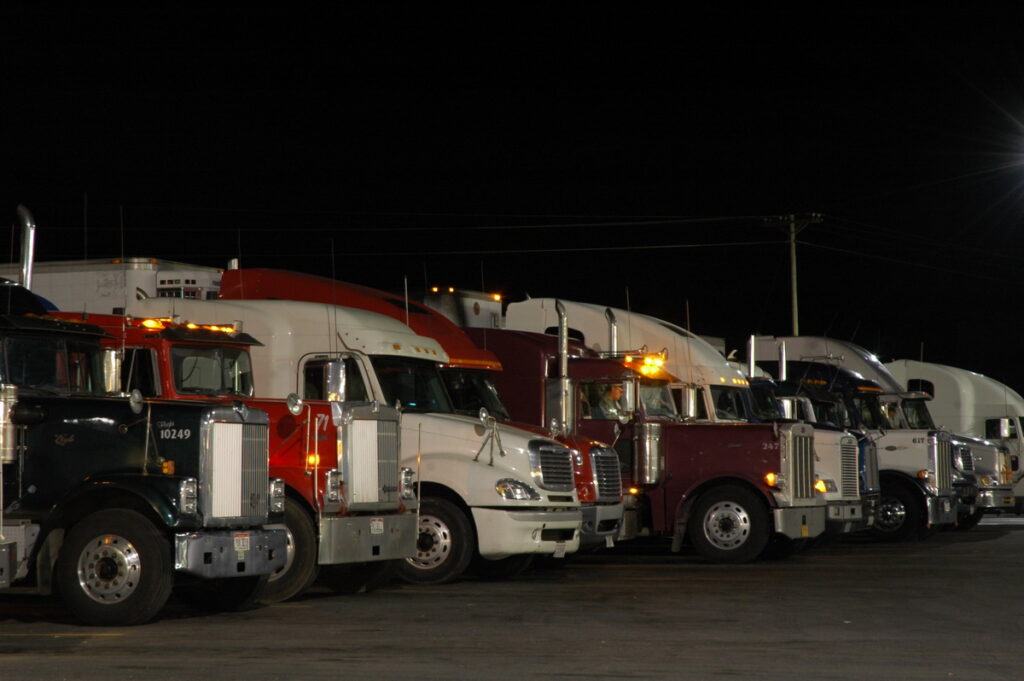
Trip planning provides a big-picture view of a trip – options for the route you will take – as well as granular detail, such as the restaurants and fuel stops available at certain waypoints. A plan will establish milestones along the way to gauge your progress. If you don’t make a mid-point milestone on time, for example, you might have to make alternate arrangements for delivery.
Knowing that ahead of time gives operations and dispatch teams a chance to reschedule if necessary. Shippers are generally more tolerant of delays when they have advance notice. Showing up late and blaming traffic or weather is no longer acceptable.
Where to start
Time and distance are your first concerns. You can calculate roughly how long the trip will take based on the mileage and average speed. Even though most of the trip may be on 65 mph highways, your average speed for the trip will be lower, perhaps 45 or 50 mph depending on how many cities you travel through or around, the density of traffic, and how often you plan to stop. Conservative estimates are better because they naturally build in a little leeway.
You can’t plan for delays, but you can build in contingencies to lessen their impact.
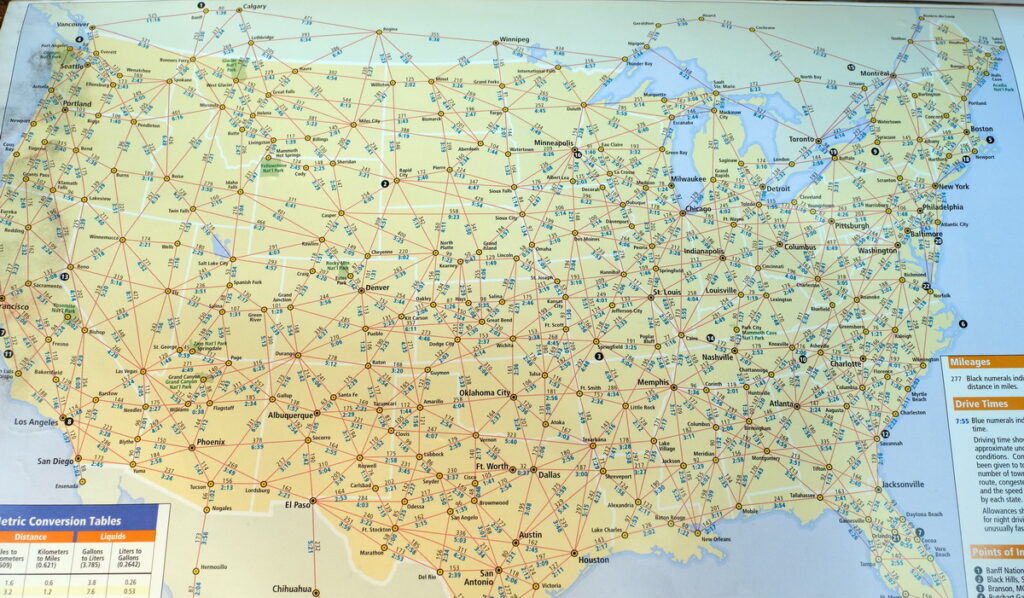
“You should build in a bit of a buffer to account for unavoidable and unpredictable delays,” says Jay Tremblay, a company driver with Morrice Transportation in Windsor, Ont. “With a bit of experience, you get to know how long a given trip will take. But there are always surprises like delays at Customs, accidents, etc. If you don’t leave a little extra time in the plan, you’ll end up scrambling the last 50 or 100 miles. Accidents happen when you’re rushed and frazzled.”
Using a base speed of 50 mph, you can plan on six hours for a 300-mile trip. A thousand-mile trip will require 20 hours of driving. If you plan a 300-mile trip using 60 mph as an average speed, you could theoretically do it five hours, but you’d have no time to stop. Any heavy traffic or construction would ruin your estimate and you’d arrive late.
It’s a good idea to build in extra time if the route takes you through big cities during daylight hours. Accounting for delays in a place like Chicago and the surrounding area could add an extra hour to the trip. Traversing Chicago at night usually won’t slow you down as much.
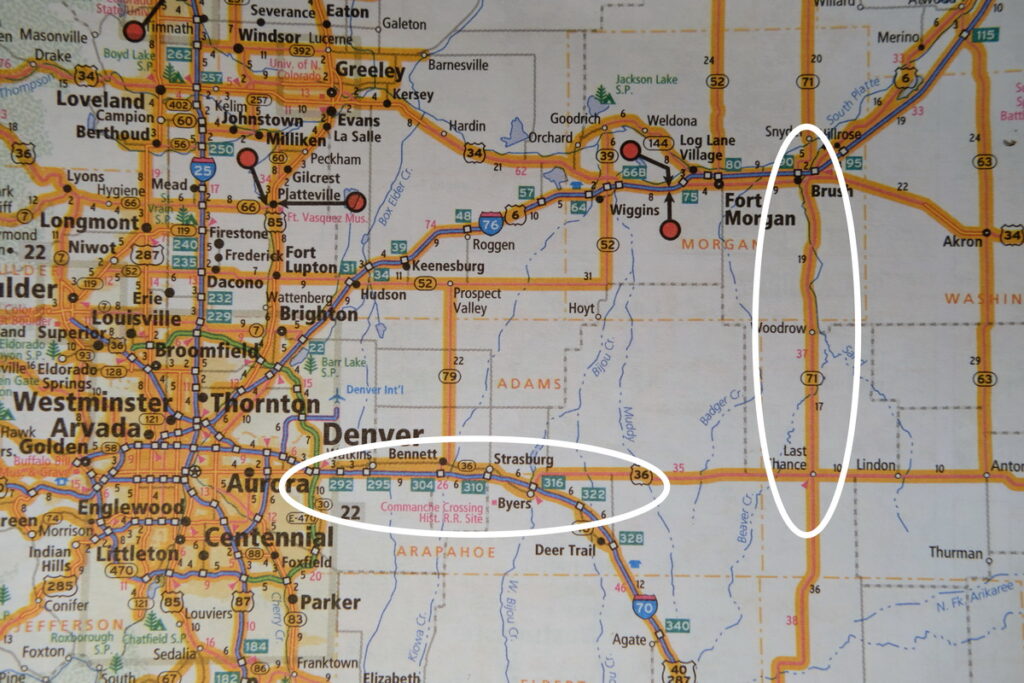
For example, a trip from Mississauga, Ont. to Minneapolis, Minn. is about 900 miles. If you plan on driving the first leg of the trip during the day, you probably won’t have enough hours to get through Chicago to a truck stop. If you plan the trip to pass through Chicago overnight, you might have enough hours to get safely to Rockford, Ill. before you run out of hours.
Of course, it all depends on the delivery appointment. If they want you in Minneapolis at 8 am, you need to be leaving Rockford at about 2 am. That means you have to arrive in Rockford at 4 pm and take your break. Chances are, you wouldn’t make Rockford from Mississauga in a single driving shift because of predictable delays through the Chicagoland area.
Plan B might see you stopping somewhere east of Chicago, like Gary, Ind. It’s 440 miles from Gary to Minneapolis, or about nine hours. You’d need to leave Gary at 11 pm to make Minneapolis by 8 am. This means you’d need to arrive in Gary at 1 pm, which would require a 5 am departure from Mississauga (factoring in the time zone change).
Or you could plan to arrive in Minneapolis at 10 pm the night before your scheduled delivery. That would demand a whole new set of time and distance calculations to determine a departure time from Mississauga.
Those are the sort of choices drivers need to make, so planning the trip in advance puts some options on the table.
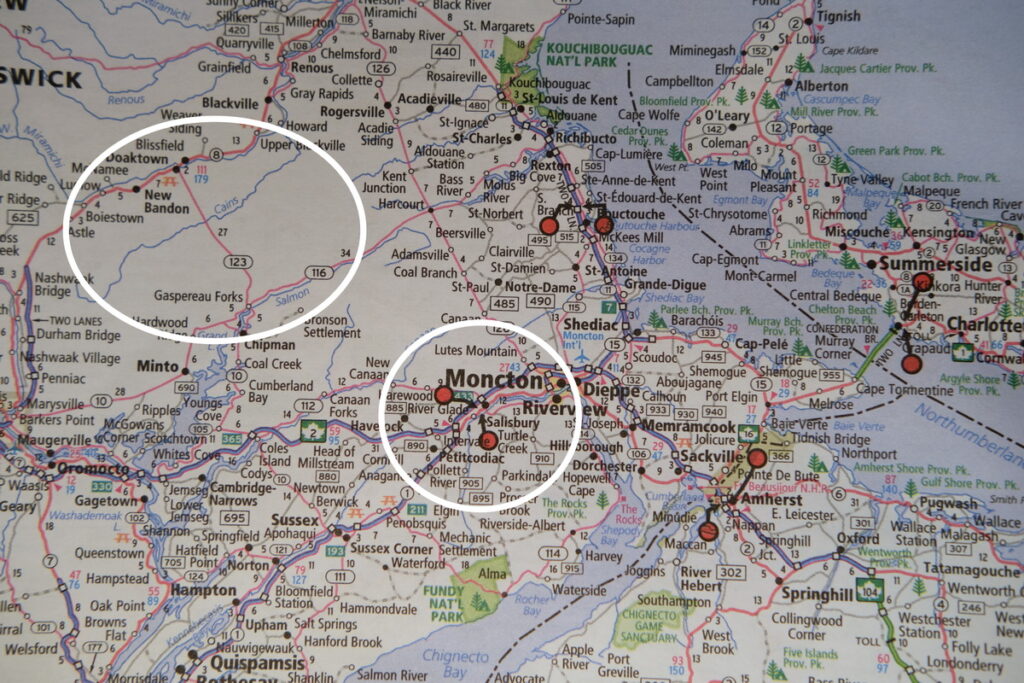
Check the map
Most fleets will have routes to steady customers, which drivers can follow if they are unfamiliar with the operation. Other drivers will often make their own maps, which they might be willing to share. You might also download directions from popular navigation apps. The only caveat here is to ensure the directions were taken from a truck-specific application, such as Rand McNally, ProMiles, PC Miler, Trucker Path, or the like. Google Maps, Apple Maps and Waze are for cars.
Truck-specific navigation systems can be expensive relative to a car GPS. They offer more services, and they include truck size and weight options for choosing routes. The extra cost is always worth it. But to get those extras, you often need to pay for a subscription or an upgrade.
The path to hell can be a short one when one of those mapping apps leads you astray, like off a short pier or down an abandoned railway siding — not to mention the ubiquitous threat from low underpasses. It happens all the time. Just check out the GPS fails on YouTube. Sometimes the root cause of the problem is not with the GPS but simply an incorrectly spelled destination. The other not-immediately obvious problem with GPS is this: if you don’t know where you’re going, you won’t know when you’re lost.
Experienced drivers often cross reference GPS suggestions with an actual road map. The recommended reference is Rand McNally’s Motor Carriers’ Road Atlas . If you’re not familiar with that publication, it has a treasure trove of information highly useful to drivers. It’s not necessarily better or worse than a GPS. It’s just presented differently.
For example, all STAA routes on the maps are highlighted in orange, which are roads approved for all standard truck weights and dimensions. You can also measure distances between exits and various towns by observing the small red or black numbers along the route. You can do that with GPS, too, but you don’t get as a big a picture of an area as you can with a page in the atlas.
“Since GPS navigation became popular, maps went out of vogue,” says Ron Klicka of Tri-County Training Truck Driving School in Ayr, Ont. “Many of our students have never used a map, so we spend a lot of time in class learning how to read the Rand McNally atlas. There’s so much in there drivers can use, but it can be hard to sort out if you aren’t familiar with it.”
His student plot trips as part of a class exercise to get them familiar with trip planning. Klicka says it’s a much-needed skill. “Fleets tell me pre-trip inspections and trip planning are the biggest weaknesses they see in entry-level drivers generally,” he says.
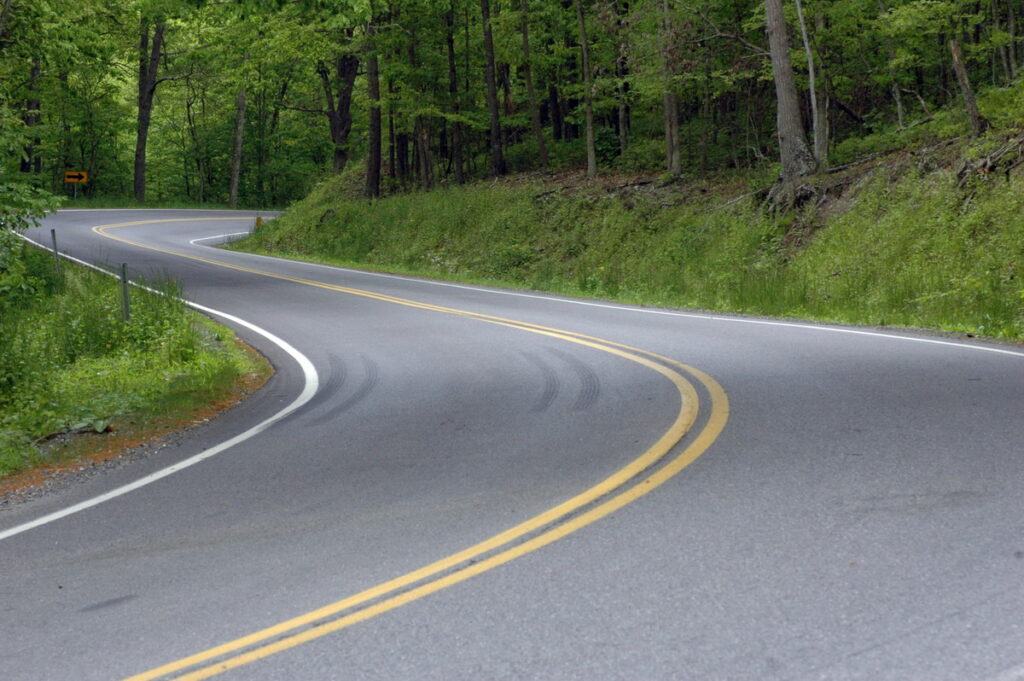
Use the apps
Driver did okay with the tools they had in the days before navigation and trip planning apps came along. The apps just made things easier and more efficient. Exit guides, for example, were once published in a book that sold for $10 or $15, and it was often outdated before it hit the street. There’s an app for that now — and it’s updated more frequently – showing available services at literally every freeway exit in America.
You can find repair services and restaurants, even hair cutting salons, with the push of a button.
Klicka used those apps to drop marker pins anywhere he found a good restaurant or even suitable places to park. “Even as you’re just driving by you can add a pin easily enough and go back and label it later,” he says. “It’s really handy to know where the parking is when you need it.”
Parking capacity and reservation apps are becoming more popular as the risk of not finding parking grows. Tremblay uses them, but sparingly. “If I know I need to be somewhere in the morning and can’t risk not finding a spot, I’ll reserve one,” he says. “This company pays for it, but a lot of companies do not.”
Parking at the customer is an option in some cases, if you have a good relationship with them, Klicka says. “There is nowhere to park on Long Island, but I knew someone with a fondness for Canadian butter tarts,” he says. “So, for the cost of a dozen butter tarts, I have a safe place to park there. It’s all about relationships.”
There’s more to trip planning than just figuring out the shortest distance between Point A and Point B. Shortest isn’t always the best if it’s going to take you into heavy traffic, lots of construction, or bad weather. Many of today’s apps provide live traffic and weather, making it easier to decide whether you want to drive 40 miles out of your way to steer around a traffic jam that’s causing a 15-minute delay.
Tremblay has the benefit now of having run many of the same routes for years. He can estimate with some precision how long a trip will take. New drivers don’t have that advantage, so doing a better job of planning the route, building in contingencies for delays, and looking at alternate routes can help avoid running out of driving time 30 minutes from the customer’s door. That has always happened, but it’s harder to hide those last few miles with an ELD.
The finer points of winter driving: Driver’s Education
Jim Park was a CDL driver and owner-operator from 1978 until 1998, when he began his second career as a trucking journalist. During that career transition, he hosted an overnight radio show on a Hamilton, Ontario radio station and later went on to anchor the trucking news in SiriusXM's Road Dog Trucking channel. Jim is a regular contributor to Today's Trucking and Trucknews.com, and produces Focus On and On the Spot test drive videos.
Have your say
This is a moderated forum. Comments will no longer be published unless they are accompanied by a first and last name and a verifiable email address. (Today's Trucking will not publish or share the email address.) Profane language and content deemed to be libelous, racist, or threatening in nature will not be published under any circumstances.
Your Name *
Your Email *
Save my information for next time
I have a very old plasticized map that i bought in 1995it is in excellent shape and shows all you need to now about city highway time to and for the USA Canada and Mexico it is call H,M GOUSHA Mack Millan Publishing USA this map saved my but many time I also use another old GPS software made for cars bus and other it is call Street and Trips from Microsoft used as reference for calculating time and fuel use it is on my lap top that I carry always with me to use.
Thank you for visiting truckandtrailer.ca!
We have changed the way we showcase trucks and trailers available for sale – and now send the details right to your email inbox.
Simply click here to subscribe to our bi-weekly HD Hotlist for the listings.
We use cookies to make your website experience better. By accepting this notice and continuing to browse our website you confirm you accept our Terms of Use & Privacy Policy .
read more >>
- Why road safety matters
- Your road safety plan
- Online courses
- Resource library
- Assessing & orienting drivers
- Crash investigations
- Distracted driving
- Driver fatigue
- Driving for work
- Hazards & risk assessment
- Impaired driving
- Journey management & trip planning
- Legal responsibilities
- Policies & procedures
- Winter driving (Shift into Winter)
- Work zone safety (Cone Zone)
- Shift into Winter

Journey Management and Trip Planning
What is journey management, step 1: is driving necessary.
- Step 2: Can you reduce driving related risk?
How it works
Creating a check-in system, check-in examples, using tripcheck, benefits of journey management, using journey management, travel check-in system.
Driving for work may be one of the most dangerous things your employees do. Journey management can help reduce the risks. It can help eliminate unnecessary driving and manage the risks drivers face when they have to be on the road. Learn how our online TripCheck tool can help you create a trip plan in minutes.
Effective journey management is good for employees who drive for work, their employers, and the planet. It’s smart business. It can help to keep people safe, cut travel costs, and reduce carbon emissions. It’s an easy tool for organizations of any size to use.
Journey management is a 2-part process that aims to prevent crashes and injuries by minimizing exposure to driving-related hazards.
It starts by deciding whether driving is necessary. It explores alternatives that would allow drivers to skip getting behind the wheel. Not driving is always the safest option, since crashes are the leading cause of work-related traumatic death in BC.
Trip planning is the second part of the process. When driving is necessary, it helps drivers prepare for the safest possible journey.
Journey management demonstrates an organization’s commitment to the health and safety of its employees. It can reduce the number of crashes and injuries, and lower driver stress. It’s an important part of a safety culture that helps to attract and retain employees.
Employers are responsible for the health and safety of their employees. When employees drive for work, their vehicle is their workplace — even if they’re driving their personal vehicle (PDF 269KB). Journey management can help make the job of driving safer by eliminating or minimizing exposure to hazards.
Avoiding non-essential driving is an obvious cost savings for any organization. The short-term benefits are less money spent on fuel, maintenance, meals, and accommodations. Reducing driving can also extend vehicle life, allowing you to lengthen the time between vehicle purchases and lower your insurance and maintenance costs.
Avoiding driving helps keep employees and the environment healthier. Reducing vehicle travel shrinks your organization’s carbon footprint. A passenger sedan with 1 occupant, for example, emits an average of 1.9 kg of carbon in a 10-km trip.
Even if the drive is only 20 minutes, the total trip time is much longer. Preparing for the drive, getting to the car, inspecting it, and finding parking all increase the time spent behind the wheel. The less time employees spend driving, the more they have for productive work.
Employers, supervisors, and drivers can all apply journey management principles. The two steps don’t take much time to complete and they serve as an early warning system that helps prevent crashes. Our TripCheck tool makes planning easy.
The first stage of journey management is to avoid needless driving. Start by asking yourself whether the trip has to be made.
Consider these alternative ways to get work done without getting in your vehicle:
- Working from home
- Phone/email
- Online meeting
- Courier or delivery service
If it’s necessary to be there in person, there are plenty of safer ways to get there than driving yourself:
- Public transit
- Taxi and ride-hailing services (PDF 153KB)
- Walking or cycling
Some of these alternatives have their own hazards. Buses and taxis travel on roads too, for example. But the risks are usually lower thanks to the driving skills of professionals and the safety measures taken by their employers.
Step 2: Can you reduce driving-related risk?
Sometimes driving can’t be avoided. When that’s the case, journey management calls for building a trip plan.
Your plan analyzes the trip ahead and anticipates the hazards you can reasonably expect to encounter. You then consider ways to reduce exposure to those hazards, such as taking a safer route and allowing plenty of time to get where you’re going. The plan also makes you think about managing risks you can’t avoid, such as speeders and dangerous intersections.
We recommend employers require drivers to prepare and submit a trip plan for travel of more than 50 km or more than 1 hour. We also suggest a plan be required when the proposed trip carries a high risk, such as on a congested route or during winter weather.
A trip plan should include:
- Name of driver and passengers
- Vehicle information (make, model, color, licence plate, etc.)
- Travel route, listing preferred and potential alternate routes. Check DriveBC for current road and weather conditions
- Destination address and any planned stops along the way
- Identification of potential hazards
- Ways to minimize risk from the hazards
- Contact information for the driver and anyone they will be meeting along the way
- Check-in system
Our TripCheck online tool helps you create a plan in minutes. Use it in combination with effective training, supervision, and inspections to help keep drivers safe.
You can also use our Journey Management Policy Template (Word 56KB) to create your own policy.
A check-in system is a quick process drivers use to let someone in their organization know they’re safe and the trip is going to plan. It’s a best practice for any organization that has employees who drive for work. A check-in system as part of a trip plan can also help employers fulfill their responsibilities when an employee works alone and assistance is not readily available. This could include a driver on a night shift or in a remote location who works on their own. Check-in procedures can help ensure regular contact with the employee.
A check-in system is a key part of trip planning. It helps employers verify their employees are safe.
A check-in system involves scheduled communications between a driver or passengers and a contact person. If a check-in is missed, the contact person tries to reach the driver to make sure everything is OK. If no contact is made, emergency measures may be taken.
A check-in system explains:
A common check-in interval is every 2 hours. Drivers and supervisors should decide on a frequency that reflects the risks associated with the trip. The greater the risks, the more frequent the check-in calls.
A phone call, text, or email are the most common methods. If cell coverage is expected to be poor or non-existent on any part of the route, check-ins will have to take place before or after those areas. In remote areas where cell service is unavailable, drivers may also need other technologies, like satellite phones or 2-way radios, to check in.
Co-workers, office assistants, supervisors, or managers can all be contact persons. They need to know the check-in interval and be available to receive scheduled check-in calls. They also need to know how to activate a response procedure if the driver doesn’t check in on time.
An emergency response needs to be part of every trip plan. What will be done if the employee doesn’t check in or if the organization is gets notified that the driver has been in a crash? Responses can include:
- Trying to contact the driver by phone, text and/or email
- Contacting the destination contact to ask if they know where the driver is
- Alerting a supervisor when the check-in is more than 30 minutes late
There’s no standard check-in procedure. Here are some examples that could be used by your organization.
Chris is transporting a client to hospital. This client has a history of becoming agitated and aggressive. The drive should take about 75 minutes. Chris and her supervisor agree on the following check-in times:
- When she arrives at the client’s house (9:30 a.m.).
- Just before they start the drive (around 9:45 a.m.).
- Every half-hour during the drive (while Chris is pulled over).
- When she and the patient arrive at the hospital (expected ETA: 11 a.m.).
Tan checks in every 2 hours in the summer. In winter, because of risky driving conditions, he checks in every hour. There are a few places where Tan knows the cell coverage is unreliable or non-existent. Tan arranges with his office contact to check in:
- Just before he leaves the reliable cell service area (call by 7 a.m.)
- When he is back in range (expect call by 8:45 a.m.)
Tan and his manager have also agreed to purchase a satellite phone to avoid this gap in the future.
Chandar drives a service truck that’s bulky and difficult to park. To reduce conflicts with busy daytime traffic, Chandar works in the evening. He drives through higher-risk neighbourhoods.
After talking with his manager, they decide he will check in every half hour while he’s in those risky locations.
Use our Check-in Procedures Template (Word 24KB) and ideas from these examples to help create a system.
TripCheck is a step-by-step planning tool to help you reduce the risks associated with driving for work. It takes about 3 minutes to complete and covers the driver, the trip, and the vehicle. Drivers who are prepared with a plan are better equipped to deal with the hazards they will encounter.
The online version allows you to complete a checklist, print your plan, and email it to up to 3 people. You can save the plan on your desktop or laptop computer, or mobile device.
Start TripCheck
You can also use TripCheck offline. We recommend all employees keep a printed copy of the forms in their vehicle, in case they lose online access.
Download and complete the forms below:
- TripCheck offline form (PDF 520KB): This form is very similar to TripCheck online.
- TripCheck offline customizable form (Word 38KB): You can adjust and customize this form to meet your organization’s journey management requirements.
Have drivers submit completed forms to their supervisor.
Journey Management Policy Template
Tripcheck offline form, check-in procedures template, safety tips for using taxis and ride hailing services for work travel, tripcheck offline customizable form, using personal vehicles for work.
20 Safe Driving Tips On How To Be a Better Driver
Driving safely should always be your top concern when you're behind the wheel of a car - whether alone or with passengers. with so many potential hazards on the road, staying alert and taking precautions to prevent accidents is essential..

In this article, we'll share some essential driving safety tips that every driver should know to ensure the safety of themselves, their passengers, and other drivers on the road. So, let's dive in and explore some essential practices that can help you become a better driver.
Good Driving Habits to Be a Better Driver:
- Practice Safe Driving & Defensive Driving Habits
- Make Sure Everyone Wears A Seatbelt for Safety
- Use Your Turn Signals
- Follow the Speed Limit
- Check Your Blindspots
- Change Lanes with Care
- Follow the Rules of the Road
- Avoid Phone Distractions
- Wait For the Train Before Crossing the Tracks
- Keep A Safe Distance Between Vehicles
- Avoid Drowsy Driving
- Never Drive Drunk / Impaired
- Pay Attention to Bad Weather Conditions / Seasons
- Watch out for Pedestrians
- Be Mindful of Cyclists and Motorbikes
- Check Your Vehicle
- Use Headlights Wisely
- Take a Defensive Driving Course
- Control Your Emotions While Driving
- Be Aware of the Law Where You Live and Where You Drive

Safe Driving Tip #1: Practice Safe Driving & Defensive Driving Habits
Discover the best safe driving & defensive driving tips that will help keep you and others on the road safe and sound. Not only can practicing safe driving promote road safety, but safe driving can also help save money on car insurance rates . Following these top safe driving practices, you can help keep yourself and others out of harm's way.
Safe Driving Tip #2: Make Sure Everyone Wears A Seatbelt for Safety
Wearing a seatbelt is one of the simplest yet most effective safe driving habits. It can reduce the risk of severe injuries or fatalities in an accident. Ensure everyone in the vehicle wears a seatbelt; even those in the back seat.
It's also crucial to correctly adjust the seatbelt, ensuring it is snug and securely fastened. The seatbelt should sit low on the hips, with the shoulder strap crossing over the collarbone and not the neck.
If you are driving with a child under 12, the National Highway Traffic Safety Administration (NHTSA) recommends that your child or infant sit in the back seat with a car seat that fits your vehicle and child’s current size and age.
Safe Driving Tip #3: Use Your Turn Signals
Using turn signals is essential for communicating your intentions to other drivers on the road. This habit helps to prevent confusion and reduce the risk of accidents, particularly during lane changes and turns. Always signal your intentions so other drivers have enough time to react.
It's also essential to ensure your turn signals are working correctly and not blocked by any objects, such as snow, debris, or other vehicles. Proper use of turn signals is a simple yet effective habit that can significantly enhance road safety for all drivers.
Safe Driving Tip #4: Follow the Speed Limit
Adhering to the posted speed limit is fundamental for safe and defensive driving. It helps maintain vehicle control and avoid collisions, particularly in adverse weather conditions or unfamiliar roads. Always reduce your speed when driving in school zones, construction areas, or other high-risk areas.
It's also important to remember that the posted speed limit is the maximum safe speed for ideal driving conditions. Sometimes, adjusting your speed even lower due to road conditions, traffic flow, or visibility may be necessary.
Safe Driving Tip #5: Check Your Blindspots
Blindspots are areas around your vehicle that are not visible in your mirrors. Checking your blind spots before changing lanes or turning is crucial for avoiding collisions with other vehicles and pedestrians. Adjust your mirrors correctly and check your blind spots regularly to avoid surprises.
In addition to checking your blind spots, it's essential to avoid the blind spots of other drivers. By staying aware of blind spots and avoiding them, you can reduce the risk of accidents and help keep the roads safer for everyone.
Safe Driving Tip #6: Change Lanes with Care
To further expand on the point above, changing lanes can be risky, particularly on busy highways. It's important to signal your intentions and check your blind spots before making a lane change to ensure the safety of yourself and other drivers on the road. Always look ahead and behind you before changing lanes, and avoid sudden or abrupt maneuvers.
To ensure a smooth and safe lane change, gradually increase or decrease your speed to match the traffic flow in the lane you want to enter.
Safe Driving Tip #7: Follow the Rules of the Road
Following the rules of the road helps to promote safe driving practices and avoid accidents. Always obey traffic lights, stop signs, yield signs, and other road signs to keep yourself and other drivers safe.
It's also important to be aware of any changes in road conditions or unexpected situations, such as construction or accidents, and adjust your driving accordingly. Being mindful of your surroundings and staying alert while driving can help you respond quickly to unexpected situations and prevent accidents.
Safe Driving Tip #8: Avoid Phone Distractions
According to the National Highway Traffic Safety Administration , distracted driving, mainly using cell phones, can lead to accidents. It's crucial to avoid using your phone or other distractions while driving to ensure your focus remains on the road. Put your phone on silent or use a hands-free device if necessary.
Safe Driving Tip #9: Wait For the Train Before Crossing the Tracks
Waiting for trains before crossing the tracks is a legal requirement. It's essential to obey railroad crossing signals and warning signs and never try to outrun a train. Trains are massive and can take a long time to come to a complete stop, so always be patient and wait for them to pass.
It's also crucial to avoid distractions like using your phone or eating while waiting for a train, as it can cause you to miss necessary signals and warnings. Remember, waiting a few extra minutes for a train to pass is much safer than risking your life and the lives of others on the road.
Safe Driving Tip #10: Keep A Safe Distance Between Vehicles
One of the most important defensive driving tips is maintaining a safe following distance. The National Safety Council recommends keeping a distance of at least three seconds from the vehicle in front of you and increasing it to four seconds or as needed in adverse weather conditions. To calculate your distance while driving, follow the three-second rule. Find a stationery object on the side of the road, and when the car ahead of you passes the object, start counting. Ideally, it should take you three seconds to get to the same object. This should give you enough time to react to sudden stops or emergencies. Avoid tailgating, as it can lead to car accidents and reduce your reaction time.
Safe Driving Tip #11: Avoid Drowsy Driving
Driving while tired or drowsy can be as dangerous as driving under drugs or alcohol. If you feel sleepy or tired, pull over to a safe location and take a nap or switch drivers. Caffeine and loud music may help you stay alert for a short while but are not a substitute for restful sleep.
It's also essential to recognize the signs of drowsiness while driving, such as yawning, drifting between lanes, or difficulty focusing. If you experience any of these symptoms, take a break immediately and rest until you feel refreshed.
Safe Driving Tip #12: Never Drive Drunk / Impaired
Driving under the influence of drugs or alcohol is illegal and highly dangerous. It impairs your judgment, coordination, and reaction time and can result in serious accidents or fatalities. Always designate a sober driver or use public transportation if you plan to drink or take medication that can affect your driving ability.
{{blog-callout}}
Safe Driving Tip #13: Pay Attention to Bad Weather Conditions / Seasons
Being aware of bad weather conditions and seasons can significantly affect driving conditions and require different driving techniques to ensure safety on the road. Different weather conditions require different driving techniques:
Winter Driving
Winter driving can be challenging due to snow, ice, and reduced visibility. To stay safe, it's essential to reduce your speed and increase your following distance, use winter tires or chains, and avoid sudden maneuvers.
Summer Driving
Summer driving has challenges, such as sudden thunderstorms and wet roads. You should use headlights during heavy rain, reduce speed, and avoid sudden maneuvers. You should also know the risk of tire blowouts due to hot weather.
Driving in the Rain
Driving in the rain requires extra caution. You should use their headlights, reduce speed, and avoid sudden maneuvers like hard braking or accelerating. You should also be aware of the risk of hydroplaning, which can occur when the tires lose contact with the road surface due to standing water.
Driving in the snow
Driving in the snow can be especially dangerous due to reduced traction and visibility. You should use winter tires, reduce speed, and keep safe from other vehicles. You should also avoid sudden maneuvers and be aware of the risk of skidding or getting stuck in deep snow.
Safe Driving Tip #14: Watch out for Pedestrians
Pedestrians are vulnerable road users, and it's the driver's responsibility to watch out for them. Always slow down near crosswalks, school zones, and residential areas, and give pedestrians the right of way. Be extra cautious at night or in low visibility conditions, and use your headlights to make yourself visible.
Safe Driving Tip #15: Be Mindful of Cyclists and Motorbikes
Cyclists and motorbikes are smaller and less visible than cars, so it's essential to be mindful of them on the road. Give them enough space when passing, and watch for sudden turns or maneuvers. Always signal your intentions and avoid distracted driving, which can be deadly for cyclists and motorbike riders.
Safe Driving Tip #16: Check Your Vehicle
Regular vehicle maintenance is essential for safe driving. Regularly checking your tire pressure, cooling systems, brake pedals, windshield wipers, and other essential components. Routine maintenance prevents breakdowns and accidents and improves your vehicle's performance and longevity.
While driving, you should also pay attention to any warning signs your vehicle may be showing, such as strange noises or warning lights, is essential. Addressing these issues promptly can prevent more significant problems down the road.
It's also essential to keep your vehicle clean, both inside and out. A clean windshield, mirrors, and headlights can help you see more clearly, and a clutter-free interior can reduce distractions while driving.
Safe Driving Tip #17: Use Headlights Wisely
Headlights are not just for night driving. Use them in adverse weather conditions, heavy rain or snow, and low visibility conditions. Avoid using high beams in oncoming traffic or behind other vehicles, as it can blind other drivers and cause accidents.
Using low beams or fog lights to improve visibility when driving in fog. High beams can reflect off the fog and reduce your visibility even more. Additionally, ensure your headlights are clean and properly aligned to improve their effectiveness.
Safe Driving Tip #18: Take a Defensive Driving Course
In addition to lower insurance premiums and improved driving skills, defensive driving courses can also benefit drivers with traffic ticket dismissals or point reductions on their driving records. This can be particularly helpful for drivers who have received a citation or violation that could increase their insurance bill rates.
Moreover, defensive driving courses can also provide a better understanding of comprehensive and collision coverage. Comprehensive coverage protects against non-collision incidents such as theft, vandalism, or natural disasters, while collision coverage covers damages incurred during an accident.
By completing a defensive driving course, drivers can better understand how insurance coverage works and make informed policy decisions. Ultimately, investing in a defensive driving course may save money on insurance premiums and improve safety and overall peace of mind.
Safe Driving Tip #19: Control Your Emotions While Driving
Road rage and aggressive driving are dangerous and can lead to severe accidents. While on the road, stay calm and focused, and avoid engaging with other aggressive drivers. Take deep breaths, listen to soothing music, or pull over to a safe location if you feel angry or frustrated. Defensive driving is about keeping yourself and others safe, not winning or losing on the road.
Safe Driving Tip #20: Be Aware of the Law Where You Live and Where You Drive
Many of these practices are not only common sense, but they are also required by law.
Knowing the driving laws in your area and actively following safe driving practices can help create a safer driving environment and potentially save lives. These laws and regulations are in place to help drivers make predictable, informed decisions where the rules of the road are clear and understood by everyone.
How Good Driving Can Save You Money
Driving safely prevents accidents and saves money on car insurance premiums. Here are some ways safe driving can lead to savings:
Car insurance discounts
Many companies offer car insurance discounts for safe driving habits, such as completing a defensive driving course or having a good driving record . Other discounts include good student grades for student drivers and low-mileage discounts for drivers who don't use their cars frequently.
The cost of car insurance can vary depending on various factors, including your driving history, age, and type of vehicle. Maintaining a good credit score may also help reduce your car insurance rates.
Lower insurance premiums
Driving safely and avoiding accidents can help you maintain a good driving record and enjoy lower insurance costs and premiums.
Additionally, installing anti-theft devices in your vehicle can help prevent theft and lower your car insurance premiums .
Avoid out-of-pocket expenses from accidents
Car crashes can result in costly repairs and medical bills. By driving safely and avoiding accidents, drivers can avoid these out-of-pocket expenses and save money in the long run.
Save on insurance with SteadyDrive
SteadyDrive is a mobile application that uses proprietary technology to score your driving skills. This, in turn, can help you get discounts on your auto insurance based on your good driving habits. Learn more about how SteadyDrive can save you money .
Typically, insurance companies offer their initial auto policy quotes based on age, credit score, and many other factors without taking your actual driving skills into consideration. Therefore, good drivers may pay more than they actually should.
On the other hand, SteadyDrive analyzes your driving habits and turns raw information into meaningful data such as your hard braking, speed, phone usage, location, gyroscope data, and many other factors pertaining to driving events. The lower the frequency of risky driving, the higher the score, which could mean greater discounts on your auto insurance. If you qualify as a safe driver, you could save up to hundreds of dollars annually. Low driving scores are not shared with insurers and do not impact your current premiums or future quotes.
If you’re 18 and above with a US driving license, download the free SteadyDrive app and follow the simple instructions to get started.
To be a safe driver, it is important to obey traffic laws and develop good driving habits and techniques. These safe driving tips can reduce your risk of accidents, injuries, and property damage. Remember, safe driving is not just for your safety but also for the safety of others on the road. Always be mindful of your surroundings, keep a safe distance from other vehicles, and avoid distractions while driving. Stay safe on the road, and make every journey a safe one!
RELATED: Driving Etiquette and Basic Driving Tips
Additional Readings:
- Texas Car Insurance Discount for Safe Drivers
- Georgia Car Insurance Discount for Safe Drivers
- Kentucky Car Insurance Discount for Safe Drivers
- Missouri Car Insurance Discount for Safe Drivers
- Pennsylvania Car Insurance Discount for Safe Drivers
Disclaimer:
SteadyDrive is not an insurer or an insurance agent or broker. SteadyDrive does not provide you with an insurance policy, so make sure that you have insurance coverage while you drive. Please contact your insurer or an insurance agent or broker (if applicable) directly regarding questions you may have pertaining to auto insurance coverage. For more details, see SteadyDrive’s Terms of Service .

In This Article:
Related posts, interested in similar articles, how to save money on car insurance & lower your rates, 28 car insurance discounts to ask your insurance agent.

Start Driving & Start Saving
Scan the QR code to get the FREE app

AARP members: Enjoy access to over 90 TED Talks. Learn more.
Popular Searches
AARP daily Crossword Puzzle
Hotels with AARP discounts
Life Insurance
AARP Dental Insurance Plans
Suggested Links
AARP MEMBERSHIP — $12 FOR YOUR FIRST YEAR WHEN YOU SIGN UP FOR AUTOMATIC RENEWAL
Get instant access to members-only products and hundreds of discounts, a free second membership, and a subscription to AARP the Magazine.
- right_container
Work & Jobs
Social Security
AARP en Español
- Membership & Benefits
- AARP Rewards
- AARP Rewards %{points}%
Conditions & Treatments
Drugs & Supplements
Health Care & Coverage
Health Benefits

Staying Fit
Your Personalized Guide to Fitness

AARP Hearing Center
Ways To Improve Your Hearing

Brain Health Resources
Tools and Explainers on Brain Health

How to Save Your Own Life
Scams & Fraud
Personal Finance
Money Benefits

View and Report Scams in Your Area

AARP Foundation Tax-Aide
Free Tax Preparation Assistance

AARP Money Map
Get Your Finances Back on Track

Budget & Savings
Make Your Appliances Last Longer
Small Business
Age Discrimination

Flexible Work
Freelance Jobs You Can Do From Home

AARP Skills Builder
Online Courses to Boost Your Career

31 Great Ways to Boost Your Career

ON-DEMAND WEBINARS
Tips to Enhance Your Job Search

Get More out of Your Benefits

When to Start Taking Social Security

10 Top Social Security FAQs

Social Security Benefits Calculator

Medicare Made Easy
Original vs. Medicare Advantage

Enrollment Guide
Step-by-Step Tool for First-Timers

Prescription Drugs
9 Biggest Changes Under New Rx Law

Medicare FAQs
Quick Answers to Your Top Questions
Care at Home
Financial & Legal
Life Balance

LONG-TERM CARE
Understanding Basics of LTC Insurance

State Guides
Assistance and Services in Your Area

Prepare to Care Guides
How to Develop a Caregiving Plan

End of Life
How to Cope With Grief, Loss
Recently Played
Word & Trivia
Atari® & Retro
Members Only
Staying Sharp
Mobile Apps
More About Games

Right Again! Trivia

Right Again! Trivia – Sports

Atari® Video Games

Throwback Thursday Crossword
Travel Tips
Vacation Ideas
Destinations
Travel Benefits

Beach vacation ideas
Vacations for Sun and Fun

Plan Ahead for Tourist Taxes

AARP City Guide
Discover Seattle

How to Pick the Right Cruise for You
Entertainment & Style
Family & Relationships
Personal Tech
Home & Living
Celebrities
Beauty & Style

TV for Grownups
Best Reality TV Shows for Grownups

Robert De Niro Reflects on His Life

Free Online Novel
Read 'Chase'

Sex & Dating
Spice Up Your Love Life

Navigate All Kinds of Connections

How to Create a Home Gym

Store Medical Records on Your Phone?

Maximize the Life of Your Phone Battery

Virtual Community Center
Join Free Tech Help Events

Create a Hygge Haven

Soups to Comfort Your Soul

AARP Smart Guide
Spring Clean All of Your Spaces
Driver Safety
Maintenance & Safety
Trends & Technology

How to Keep Your Car Running

We Need To Talk
Assess Your Loved One's Driving Skills

AARP Smart Driver Course

Building Resilience in Difficult Times

Tips for Finding Your Calm

Weight Loss After 50 Challenge

Cautionary Tales of Today's Biggest Scams

7 Top Podcasts for Armchair Travelers

Jean Chatzky: ‘Closing the Savings Gap’

Quick Digest of Today's Top News

AARP Top Tips for Navigating Life

Get Moving With Our Workout Series
You are now leaving AARP.org and going to a website that is not operated by AARP. A different privacy policy and terms of service will apply.
Go to Series Main Page
Avoid Distracted Driving
Focus is key while driving. Distractions can cause even the most experienced drivers to make dangerous mistakes.
Read these tips on how to avoid distractions behind the wheel:

AARP Membership — $12 for your first year when you sign up for Automatic Renewal
Secure Your Cargo
Be sure to put all of your cargo in a secure place in your car. Reaching for loose belongings is dangerous; it takes your hands off the wheel and often takes your eyes off the road. Make sure all of your belongings are firmly held in place.
Restrain Your Pet
Restrain your pet while driving. It’s important to restrict your pet’s movement to protect it from a crash or inflating airbags.
- For dogs, consider investing in a pet seat belt, which is easy to use and works in conjunction with a normal seat belt. Keep in mind that attaching a restraining device to your dog’s collar can end up choking the pup; instead, use a harness that wraps around your dog’s chest.
- Cats should be contained in a crate, cage or pet car seat that is secured with a seat belt. Look for a sturdy carrier with enough ventilation and plenty of room for your cat to turn around and stretch out. Also make sure you secure the carrier so that it stays safely in place in case of a collision or sudden stops.
Cellphones and Other Distractions
Driving is a demanding activity that requires your full attention to many things at the same time. Do not be distracted by things not directly related to the driving task. Eliminate distractions inside the vehicle and minimize activities that require you to take your eyes off the road, especially in heavy traffic.
AARP Auto Buying Program Powered by TrueCar
Shop for a car with safety features you want. buyers can get a free aarp smart driver course..
Please Select Make
Please Enter ZIP Code
ARTICLE CONTINUES AFTER ADVERTISEMENT
Here are a few rules of the road for cell phone use:
- DO NOT send or read text messages while driving.
- Make outgoing calls only when you are at your destination or parked.
- Use your voicemail for incoming calls or let a passenger talk for you.
- Put your cellphone on “silent” so that you are not tempted to answer it while driving.
- Remember, research shows that even talking on a hands-free cellphone involves concentrating on the conversation at hand, often at the expense of the driving task.
Distracted driving laws, especially when it comes to cell phone use, vary by state. See the distracted driving laws in your state .
AARP® Auto Insurance Program from The Hartford
$577 average member savings
To reduce other distractions:
- Pre-set your favorite radio stations.
- Load your favorite CD before you start driving.
- Refrain from eating, drinking and smoking.
- Know your route before starting out, so that you do not need to consult a map or directions during the trip.
- Set up your GPS-based navigation device and adjust the volume control.
- Manage passenger conversation to keep it from being distracting.
Distractions play a major role in many accidents on the roadway today, and modern technology is a major source of distraction while driving. Do your part in helping keep your roads safe by keeping your whole mind on the road and avoiding distractions!
Smart drivers know how and why to avoid distractions! Want more tips for staying focused on the road? Consider taking the AARP Smart Driver™ course —AARP Driver Safety’s flagship offering and the nation’s first and largest refresher course designed specifically for older drivers. The AARP Smart Driver course is available in a classroom and online , in both English and Spanish. In some states, you may even be eligible for a multi-year insurance discount upon completion of the course.*
For more information, visit www.aarp.org/safedriving or call 1-888-AARP-NOW (1-877-846-3299).
*The insurance premium discount is not available in all states for the online or the classroom versions of the course. Please consult your insurance agent for further details.
Discover AARP Members Only Access
Already a Member? Login

AARP NEWSLETTERS

%{ newsLetterPromoText }%
%{ description }%
Privacy Policy

More From AARP
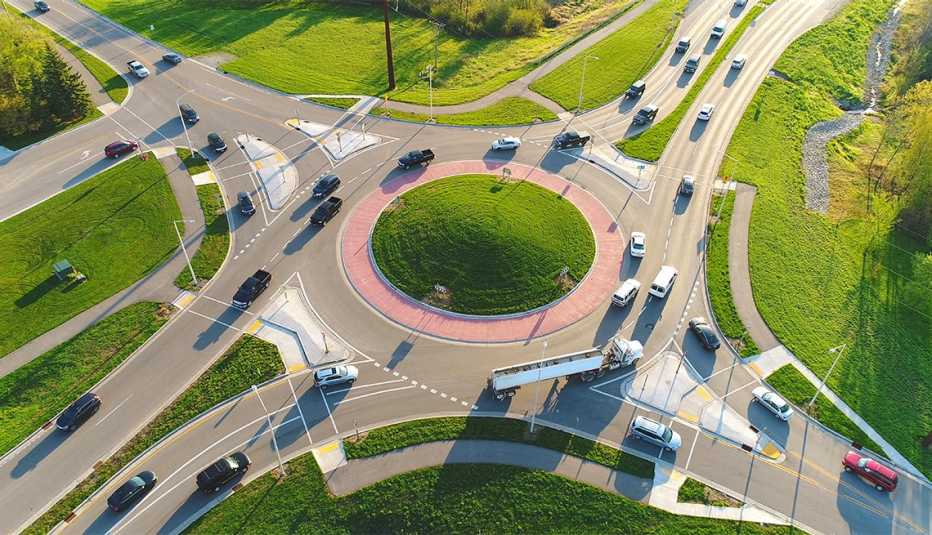
How to Navigate a Roundabout
AARP Value & Member Benefits

Carrabba's Italian Grill®
10% off dine-in or curbside carryout orders placed by phone

AARP Travel Center Powered by Expedia: Hotels & Resorts
Up to 10% off select hotels

ADT™ Home Security
Savings on monthly home security monitoring

AARP® Staying Sharp®
Activities, recipes, challenges and more with full access to AARP Staying Sharp®
SAVE MONEY WITH THESE LIMITED-TIME OFFERS


Tips For Safe Driving On A Road Trip

The open road can be a fun place to bond with your family and friends, however since you are driving for long stretches of time in unfamiliar places there can be many risks.
So it is important to understand how to be safe when taking a road trip.
However, there are some road trip-specific tips to keep in mind before heading out:
Plan Your Trip Wisely
The best thing you can do when taking a road trip is to plan your trip. If you know the best times to drive and the details of your route, you’ll be able to reduce your risk of accident.
There are several things to keep in mind when planning your trip, here are a few of them:
- Prepare your car. Simple car maintenance can help prevent accidents. Make sure your lights and brakes work correctly. Check your air pressure and tire tread. Check that your windshield wipers , windshield washer fluid, and your defrost are all in good working order. Also while on the road, make sure to routinely check these things to make sure everything on your car works as it should.
- Look at the weather for everywhere you are going to be driving. If there are any dangerous weather conditions, plan to avoid those routes or give yourself time to pull over.
- Check into the road construction delays along your route. There are several websites and apps that can help you understand where any road construction is happening on your route, so you can plan accordingly.
- Give yourself plenty of time. Impaired driving is one of the main causes of accidents. Give yourself a break at least every two to four hours to stretch your legs and get some exercise. Do not drive when you are tired or at night when fatigue and highway hypnosis can cause you to become impaired. Also make sure that you schedule eight hours of sleep for every night.
- Do not rush to your destination , this will lead to speeding which can put you at risk of an accident.
- If you are traveling through cities, keep in mind rush hour times. Rush hour is a dangerous time to drive and can be incredibly stressful if you are in an unfamiliar city. If possible, plan your route so you are not in the city during rush hour.
- Plan for the sun. Sun glare can cause accidents, so try to plan your trip so you are not driving into the sun.
- Get roadside assistance and prepare a road kit . So in case you do get into an accident or your car breaks down, you can get help when you need it.
Buy A Pre-Made Emergency Roadside Kit Here
Interstate Driving Tips
Most road trips take advantage of our interstate system. However because of the high speeds and long stretches, many accidents happen on the interstate. So it is important to exercise safety on the interstate with these tips:
- Follow the posted speed limit. It’s easy to go too fast on the highway. If you can, set your cruise control so that you can just focus on the road.
- Watch for other drivers. Be mindful of where they are, be especially aware of any vehicles in your blindspot. Be aware of the drivers in front of you, beside you, and behind you, so you can react accordingly to any situation.
- Always stay in the right lane unless passing.
- Do not tailgate other drivers. If they are going to slow pass them.
- If a driver is tailgating you, do not speed up. Instead change lanes and let them pass you.
- When passing, always use your turning signal. Check your blindspot then slowly move over.
- Watch the road for debris and potholes. Watch for any road signs for crossing animals, falling rocks, or other warning about conditions.
- Use caution around semi-trucks and large vehicles. Always assume that the driver of a truck has not seen you. Stay out of the blindspots of large vehicles . If they begin changing lanes without seeing you, move out of their way.
Driving In Unfamiliar Cities
Your route may take you through a large city. Driving in large cities is a challenge, especially if you are unfamiliar with the roads. So you want to be prepared and use extra caution in cities by following these tips:
- Make sure you have your route through the city well planned. If possible, use GPS navigation to keep you on the right path.
- Check traffic reports before entering a city. Even if it is not rush hour, there still may be some stoppage because of construction.
- Take notice of all street signs. You do not want to turn down a one way street or make an illegal turn on red. Follow posted speed limits.
- Keep your lights on and signal your turns. You want to communicate with other drivers as much as possible.
- If you need to merge or make a turn, try to get into the turning lane as soon as possible. If you take a wrong turn or miss a turn, don’t try to correct by driving illegally. Just turn around and go back.
- Have a backup plan in case your route does not work out. Make sure that you do not end up driving somewhere that is not safe.
Road trips can be a great adventure if you plan accordingly. Since there is so much driving involved, it is important that your driving skills are at their very best. A course at an Illinois adult online driving school can help you hone these skills so that when you hit the road, you’ll have a safe and memorable trip.
The Things You Should Never Do on a Road Trip
So you’re all set and you’re all having fun, but in one way or another, someone is bound to make a mistake, right? Here are some of the things you shouldn’t do to avoid being that someone.
- Don’t forget to bring your share of snacks and drinks. No matter what you agreed on with the rest of the guys, never leave home without preparing something you can share with them when, say, the delivery option is suddenly unavailable, or if you fail to find any place to dine. Trust me when I say that things can look ugly even when only one of you is hungry. You should always have some snacks or drinks to offer to avoid ruining the entire trip just because there’s nothing to eat.
- Don’t plan everything out. It’s good to know you have a plan, but leave some room for spontaneous adventures. Having to stick to a tight schedule can end up not meeting everyone’s expectations, which can dampen the mood. It doesn’t hurt to veer away from your plans instead of a more exciting one, right? Just go with the flow and see how things can end up being better than you have in mind.
- Don’t forget your road trip emergency kit. When I say emergency kit, this does not only include your usual “emergency kit”, this also includes your car emergency kit. You know, spare tires, jack and lug wrench, as well as jumper cables, car fluids, and emergency gas. You don’t want to be stuck on the road and spend all your precious hours waiting for some rescue after simply getting a flat tire. That will surely kill all the excitement you have reserved for your trip!
Leave a Reply Cancel Reply
Your email address will not be published. Required fields are marked *
Your privacy is important to us. We use cookies and other tracking technologies to ensure the performance and security of our website and to understand usage. This may include disclosures about your use of the website to third parties. By using our website, you agree to its use of these technologies.

Health Source
Your Health and Wellness Resource
- Children's Health
- Chronic Conditions
- Food & Nutrition
- Digestive Health
- Diversity, Equity and Inclusion
- Heart Health
Injury Prevention
- Men's Health
- Mental Health
- Substance Abuse
- Women's Health
- Diversity, Equity & Inclusion
5 Simple Ways to Avoid Distracted Driving
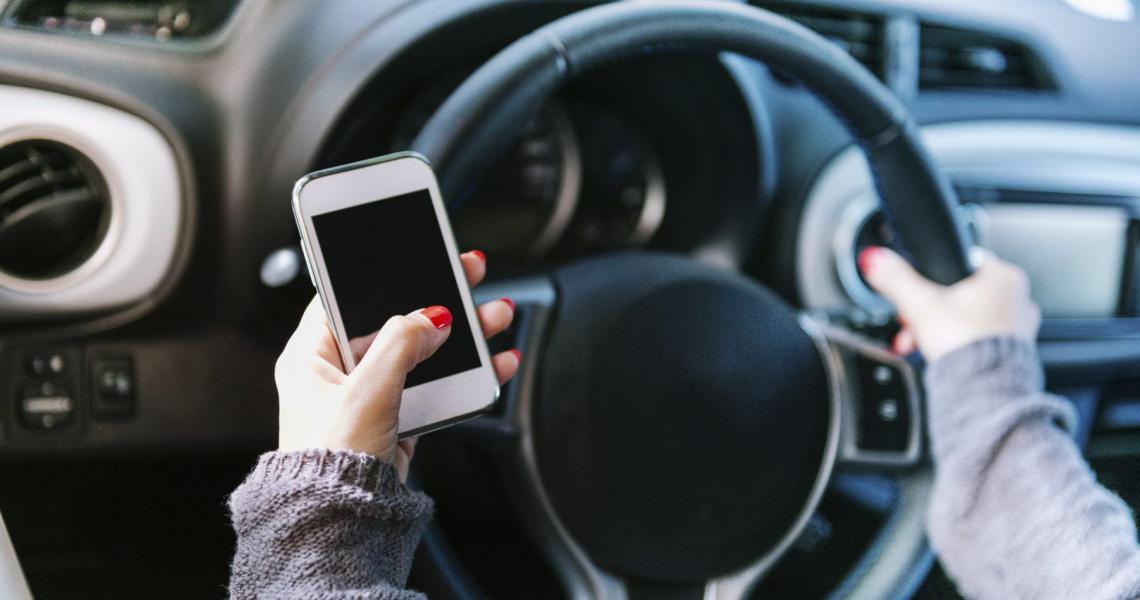
There are different types of distracted driving:
- Visual distractions that can take your eyes off the road, such as reading signs on the side of the road;
- Manual distractions that can take your hands off the wheel, like eating; and
- Cognitive distractions that take your mind off driving, like talking with passengers or using voice-activated features.
Texting while driving combines all three types of distractions.
It takes your eyes off the road, your hand off the wheel, and your mind off of driving. This combination is dangerous and often fatal.
Every year, over 3,000 people are killed and approximately another 400,000 are injured in crashes involving a distracted driver. In fact, the National Safety Council ranks distracted driving as one of the top three causes for road related fatalities and it is completely preventable.
Tips to avoid being a distracted driver
- Fully focus on driving. It may seem obvious, but making driving your priority can cut down on the risk of distractions.
- Before you start the car, make sure your navigation is programed, your entertainment or music set up, and you’ve already contacted anyone who may need to know your arrival time.
- If possible, it’s best to eat meals or snacks before or after your trip, or when you are not actively driving. When you are refueling your car, take the time you refuel yourself with snacks before getting back behind the wheel.
- Put your phone in your bag, in the center console, or out of site and reach to limit your automatic response to grab it when you hear an alert.
- Speaking of phones, there are many free apps and built in options to prevent you from becoming distracted or using your phone while driving.
If you want to learn more about the risks and dangers around distracted driving, plan to attend the “Txt U L8r” Program!
Join us for “Txt U L8R”
Join us on April 10 for the free public event “TXT U L8R,” a unique program designed to discourage individuals from texting while driving.
Key elements include a demonstration of an advanced driving simulator, a presentation of a realistic trauma scenario, and a testimonial from the survivor of an accident caused by a teen driver who was texting.
- When: Wednesday, April 10 th from 6-7:30
- Where: UVM Medical Center, UVM Medical Education Pavilion, Sullivan Classroom
Click here to register.
Abby Beerman is an injury prevention coordinator at University of Vermont Medical Center and Children’s Hospital.
Related Stories

Eclipse Viewing: Do’s and Don’ts

8 Tips for Skiing and Riding Safely

Children's Health
Winter Coats and Car Seats

How-Tos for Hunters

Look Before You Leap

Is DEET Bad? And Other Questions That Bug You.
stay informed.
Sign up to receive the latest stories, information and guidance from our experts on a wide variety of health topics.

How to Plan a Trip With Multiple Stops: Road trip tools and tips
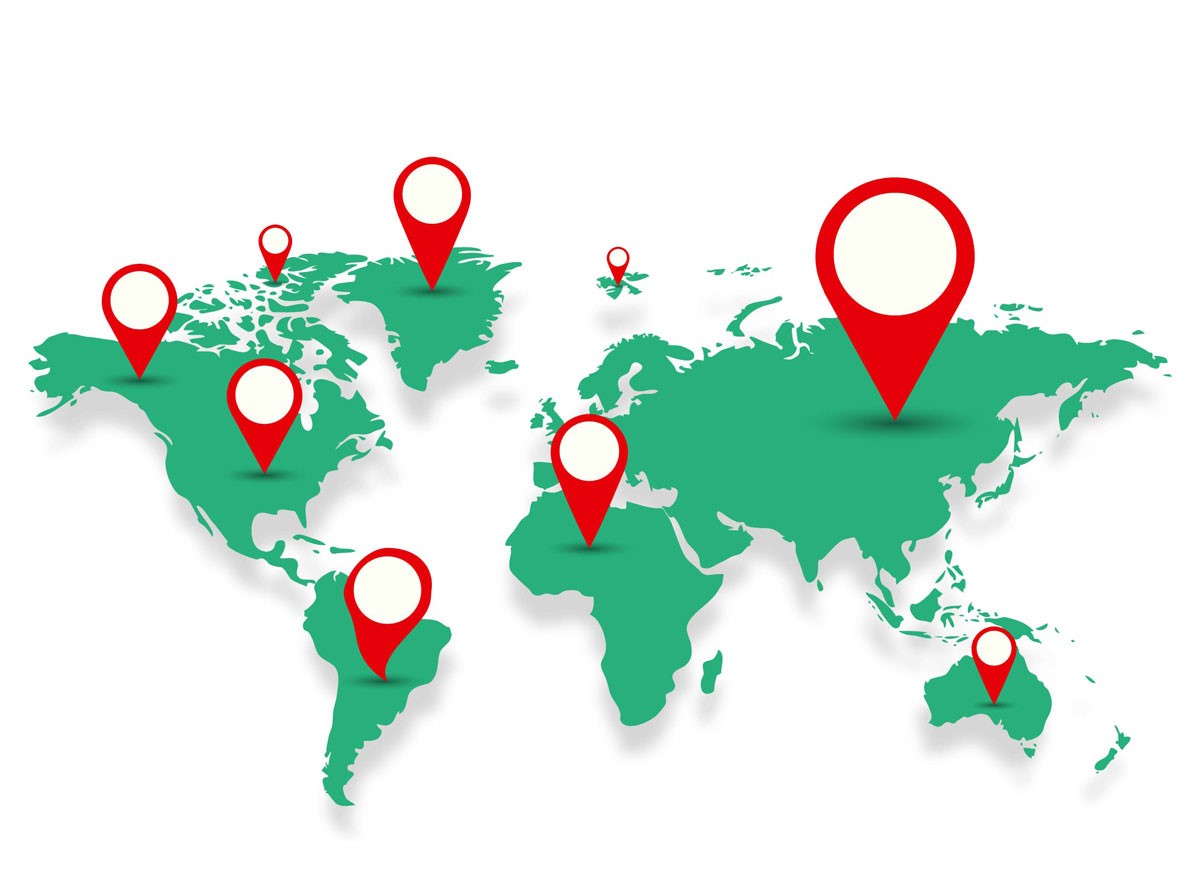
Do you enjoy the freedom of traveling by car to get off the beaten track? Planning a road trip with multiple stops is an easy and fun way to explore the world! Here are the best free apps and tips for planning your trip.

Going on a long road trip and needing to break up the journey? Or maybe you're excited by the freedom of exploring by car rather than having your route dictated by train stations and bus stops. Planning a road trip with multiple stops can be great fun.
There are many free resources to help you plan your journey, such as these top travel apps and essential packing lists . I'll share my top five picks for route planner apps in this article with you. I'll also share my top ten tips for ensuring your trip goes smoothly so you can make some great memories on the road.
Planning a Trip With Multiple Stops
You can plan a trip with a desired destination in mind and decide on multiple stops en route from your starting point. Search for exciting things to see along the way and add them to your route. Remember to also flag up service stations and plan pit stops for gas.
Of course, you don't always have to be at the wheel. You can make reservations at cafes and restaurants along the way for meals or coffee breaks. Or if you want to spend more time in a specific area, book accommodation in advance. This also gives you a few days off the road to relax so you can continue your journey feeling re-energized.
When planning your route, estimate your driving time realistically, considering speed limits and traffic. Of course, traffic can always be unpredictable, and this is where route planner apps come in handy.
Route planner apps are more than just maps. They let you key in your desired destination and find the best route from A to B or A to B to C to Z in the case of multiple stops. Such apps often give you several options, such as the fastest routes or ones without tolls.
5 Best Free Route Planner Apps
These are my top five apps for planning a trip with multiple stops. They all have desktop and app versions that sync with one another. So you can plan your trip on your computer at home, then implement it with your smartphone in the car.
They all allow you to download your map to consult offline, which is vital if you lose connectivity. All their features help you minimize the time spent on driving and logistics. This way, you can maximize your time exploring your surroundings on a road trip with multiple stops!
5. Google Maps
Google Maps is the best-known route planner and the app most people will use to plan a trip. It redirects you to the best route if you miss a turning or spot something exciting you want to check out.
Since it's powered by a great big search engine, it has abundant data to find where you want to go and points of interest. With a cell phone connection, you can use voice commands and go completely hands-free in your car. You can ask Google what road you're on or to divert you to the nearest McDonald's for a snack stop.
If you need help remembering where you parked your car, save your parking location on Google Maps before you wander off. You can then use your phone to navigate back to your vehicle later. If parking is timed, you can also have the app remind you when to move your car.
You can use the app to share your location with someone you trust if you're worried about safety in a particular area. With multiple stops, Street View mode can be helpful when you're struggling to match where you are on the map. The app will also track your journey, so you can go back and review it later.

4. MapQuest Route Planner
MapQuest has been around for more than 25 years and is trusted by many "old school" drivers who spend much time on the road. This deceptively simple application offers plenty of features for more complex route planning.
Say you prefer to make your own decisions on traffic routes and the best places to get gas. Rather than choosing for you, Mapquest can overlay data on your map, giving you all the information you need to plan your route.
If you let MapQuest do the work, it can help you find the fastest route or the one with the least tolls. You can also ask for route suggestions that will maximize your fuel efficiency.
MapQuest offers more detailed directions than many route planner apps. This is useful if you're driving in an area that you aren't familiar with. It can alert you to landmarks that will let you know if you're on track or have gone too far. You can even view real-time traffic cameras.
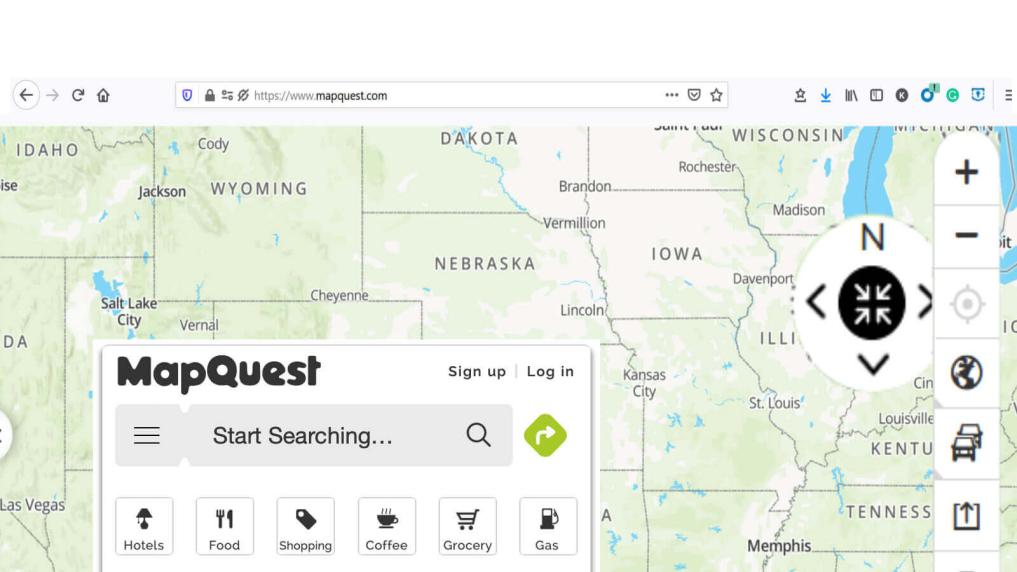
3. Waze Route Planner
Waze was bought by Google back in 2013, so how is it different from their flagship route planner tool?
Waze feels more personal and interactive as it uses real-time data from other users to inform you of road conditions. This also means you can get info that Google doesn't include, such as police stops.
Waze can advise you on the best departure times based on current and past traffic data. The app also pulls up suggestions as needed, such as gas stations and parking. Essential information is available as shortcuts from the main navigation screen.
If you want company on the road or need help with gas money, you can switch to carpool mode in Waze. The app will find other users who are heading in the same direction. This feature may come to your rescue if something happens and you find yourself stranded!
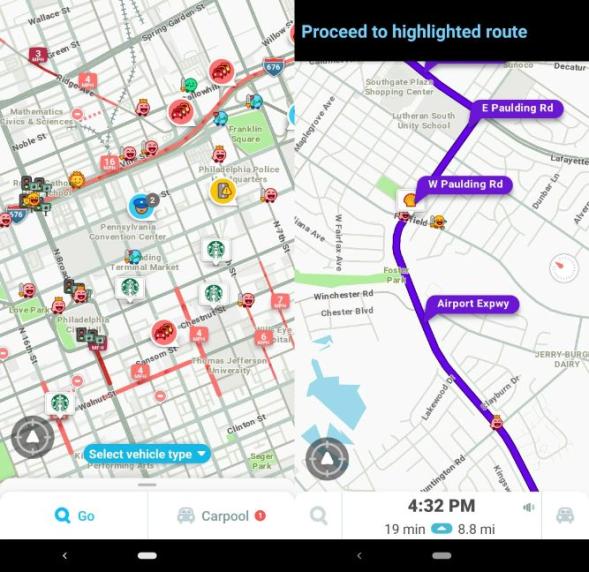
2. inRoute Planner
inRoute lets you plan a journey with up to 150 stops. You can organize your route manually or ask the app to optimize one for you. Once you've planned your trip, you can export it to navigation apps such as Google and Waze.
inRoute stands out among route planners and map apps because it offers live weather alerts while you're driving. This is helpful if you're nervous about driving in big storms or want to avoid getting caught on icy roads.
inRoute has a free version, but many features only kick in when you pay for the Pro version. Getting a temporary subscription can be worth it if you know you'll be driving around an area where the weather is a concern. inRoute planner is currently only available on iOS.

1. Roadtrippers
Roadtrippers is an app for adventurers rather than people who just want to get from A to B as quickly as possible. You can plan routes with up to 150 stops.
Once you have your primary locations, Roadtrippers will do most of the work for you and recommend exciting places along your route. These are curated by the app and often include reviews from other travelers.
The app will also mark gas stations where you'll likely need them. It also estimates how much you'll spend on gas, which is extremely useful when budgeting your trip.
If you upgrade to the app's Pro version, you can get discount deals and additional features such as planning the best route for an RV. Read this full Roadtrippers review to decide if it's right for you.

10 Top Tips for Planning a Multi-Stop Road Trip
What else can you do to get as much enjoyment as possible out of your multi-stop road trip? As well as using a good route planner app to map out your journey, here are some of my top tips:
- Take your car for a check-up with your mechanic before you go. This way, you can avoid getting stuck on the side of the road due to something easily preventable.
- Pack a first aid kit for yourself and for your car. This should include a spare tire, a monkey wrench, and essential engine replacement parts. If your car breaks down, you can often find good Samaritans who will know how to get it running again. All you need is to have the right tools on hand.
- Join a roadside rescue plan active in the area you're traveling in case your car has a breakdown.
- Download essentials such as maps and playlists before you go. Even with good cell phone coverage, you'll likely encounter dead zones on the road and may have to pass a few hours without reception. Plus, this helps you save your data for more important things.
- Bring a paper map. Even if you download everything and bring a phone charger, there's no guarantee that you'll always have access to your online maps. Be prepared with a paper map in the hope you won't need it.
- Download a range of playlists, podcasts, and audiobooks to keep you entertained on the road. Autio is an app that delivers road trip stories based on your travel location. These make the time pass quicker and help you stay focused and awake longer while driving.
- Be realistic about how much time you plan to spend driving each day. Spending hours behind the wheel can be tiring, so plan enough rest stops in your itinerary. You should also provide ample buffer time for how long it'll take to get to each destination.
- Pack food and beverages if you need help finding good places to get a snack. A small cooler at the base of the front passenger seat can be a lifesaver. You can get creative with the finger foods you bring along on your journey.
- Plan accommodation along the way to have a safe place to pull over for the night. Avoid sleeping in your car overnight, as you're unlikely to wake up feeling refreshed and ready for another day on the road. But do pack a pillow in case you need a quick nap.
- Have a thorough itinerary, but leave space for flexibility. You never know what exciting things you might encounter on the road. Locals might tell you about nearby waterfalls and must-see museums you didn't find in your research. If you pack your schedule too tight, you won't have time for these treats. A little spontaneity is what road trips are all about.
Looking for more tips? Read this beginner's guide on how to plan a driving trip stress-free .
Road Trip With Pilot
Planning a road trip with multiple stops is similar to planning any other type of trip. You just need to make a few more reservations along the way. You'll want to take advantage of travel apps to make sure you get everything essential for your trip. So start planning your multi-stop road trip with Pilot!

Disclosure : Pilot is supported by our community. We may earn a small commission fee with affiliate links on our website. All reviews and recommendations are independent and do not reflect the official view of Pilot.

Satisfy your wanderlust
Get Pilot. The travel planner that takes fun and convenience to a whole other level. Try it out yourself.
Trending Travel Stories
Discover new places and be inspired by stories from our traveller community.

Related Travel Guides
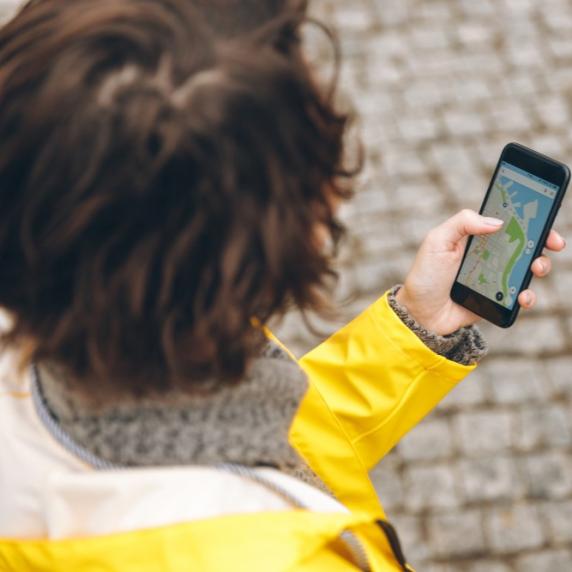
Can you Plan a Trip on Google Maps? Yeah, but...

Roadtrippers App Review 2024: Official Travelers Cheat Sheet!
![trip planning can help prevent blank driving Autio App Review [2024]: THE Must-have for Road Trips?](https://assets-global.website-files.com/63d1baf79ce0eb802868785b/63d1baf89ce0eb82cd688ffa_Autio_logo.jpeg)
Autio App Review [2024]: THE Must-Have for Road Trips?

Make the most of every trip
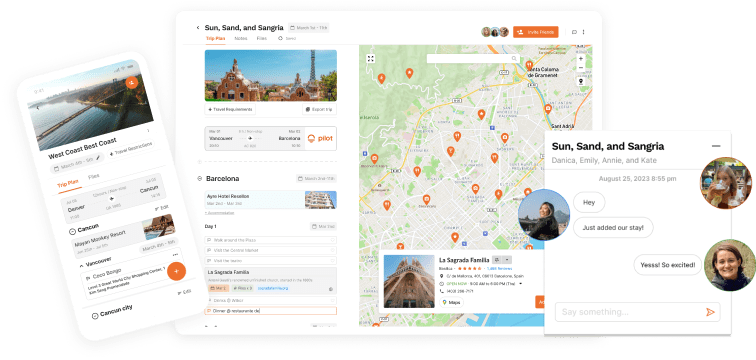
You won’t want to plan trips any other way!
The trip planner that puts everything in one place, making planning your trip easier, quicker, and more fun.

You'll never travel without our trip planner again
Travel planning at its best. build, organize, and map your custom itineraries in a free travel app designed for vacations & road trips, powered by our trip planner ai.

Your itinerary and your map in one view
No more switching between different apps, tabs, and tools to keep track of your travel plans.
What travelers are raving about
Features to replace all your other tools, add places from guides with 1 click, collaborate with friends in real time, import flight and hotel reservations, expense tracking and splitting, checklists for anything, get personalized suggestions, plan like a pro.
Unlock premium features like offline access, unlimited attachments, flight deals, export to Google maps, and much more
Offline access
Unlimited attachments, optimize your route.
4.9 on App Store, 4.7 on Google Play
Discover your next favorite destination
Have tips of your own? Write a guide to share with other travelers like you!
Ready to plan your trip in half the time?
For every kind of trip and every destination, the best road trip planner, the best vacation planner, the best group itinerary planner.
Check out our Instagram page to see what we're up to!
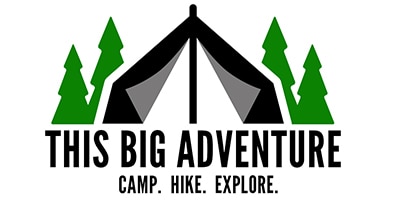
FREE Printable Travel Planner
- Pinterest 186
Plan for your next adventure or road trip with this FREE Printable Travel Planner. Includes daily itineraries, budget planning, checklists and so much more! Just download, print and get planning!
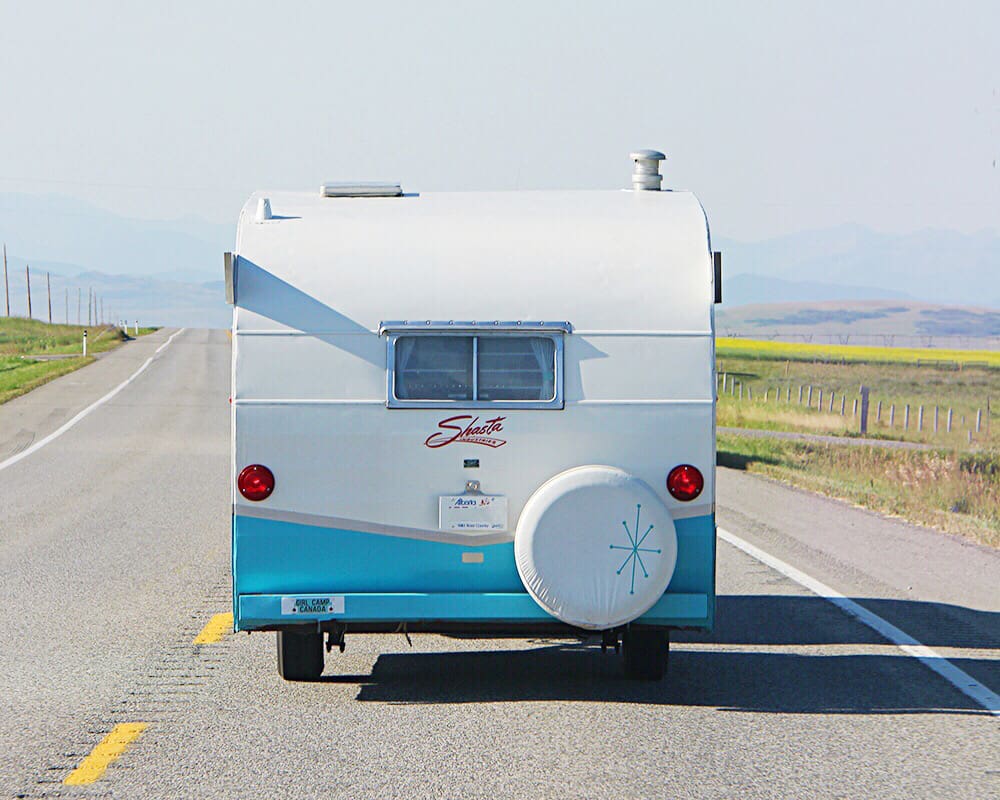
Make travel planning easier with checklists!
All the things that need done before travelling and road trips can feel overwhelming. But you can help manage all the planning stress by writing it down! Today we’re sharing 23 pages in our FREE ‘This Big Adventure Travel Planner’. Just download the sheets you want to use, print them out and you’re one step closer to a stress free trip!
What This Printable Travel Planner Includes:
All of these pages are free to use! They’re in a simple format that is easy to read and print. Just print them off and you’re one step closer to being a travel planning rockstar! Here is what is included:
- First, click here to DOWNLOAD all 23 pages
- Monthly Calendar – a birds eye view of your travel month
- Accommodation Research – an easy way to narrow down accommodations
- Accommodation Details – for details of your stay
- Travel Overview – an overall look at your trip
- Trip Snapshot – another overall look at your trip
- Budget Overview – plan your travel spending
- Expense Tracker – keep track of your travel spending
- Daily Planner – an overall view of your trip, by day
- Daily Itinerary – a more detailed look at your trip, by day
- Daily Road Trip Planner – a detailed schedule for road trips by day
- Road Trip Destinations – list where you want to go, what to visit and what to do
- Activity Planner – detailed planning of your trip activities
- Activities to Try – list what you want to do
- Restaurants to Try – list the restaurants you want to try
- Shopping + Souvenirs – keep track of shopping
- Packing Cheat Sheet – a list of items to pack
- What to Pack – a blank sheet so you can list what you want to pack
- Outfit Planner – a more detailed way to plan your trip outfits
- Travel Checklist – a blank checklist for everything you want to take
- Grocery List – for snacks and groceries
- Pet Sitter Notes – info for safe care of your critter!
- Notes/Journal – a place to keep track of highlights of your trip
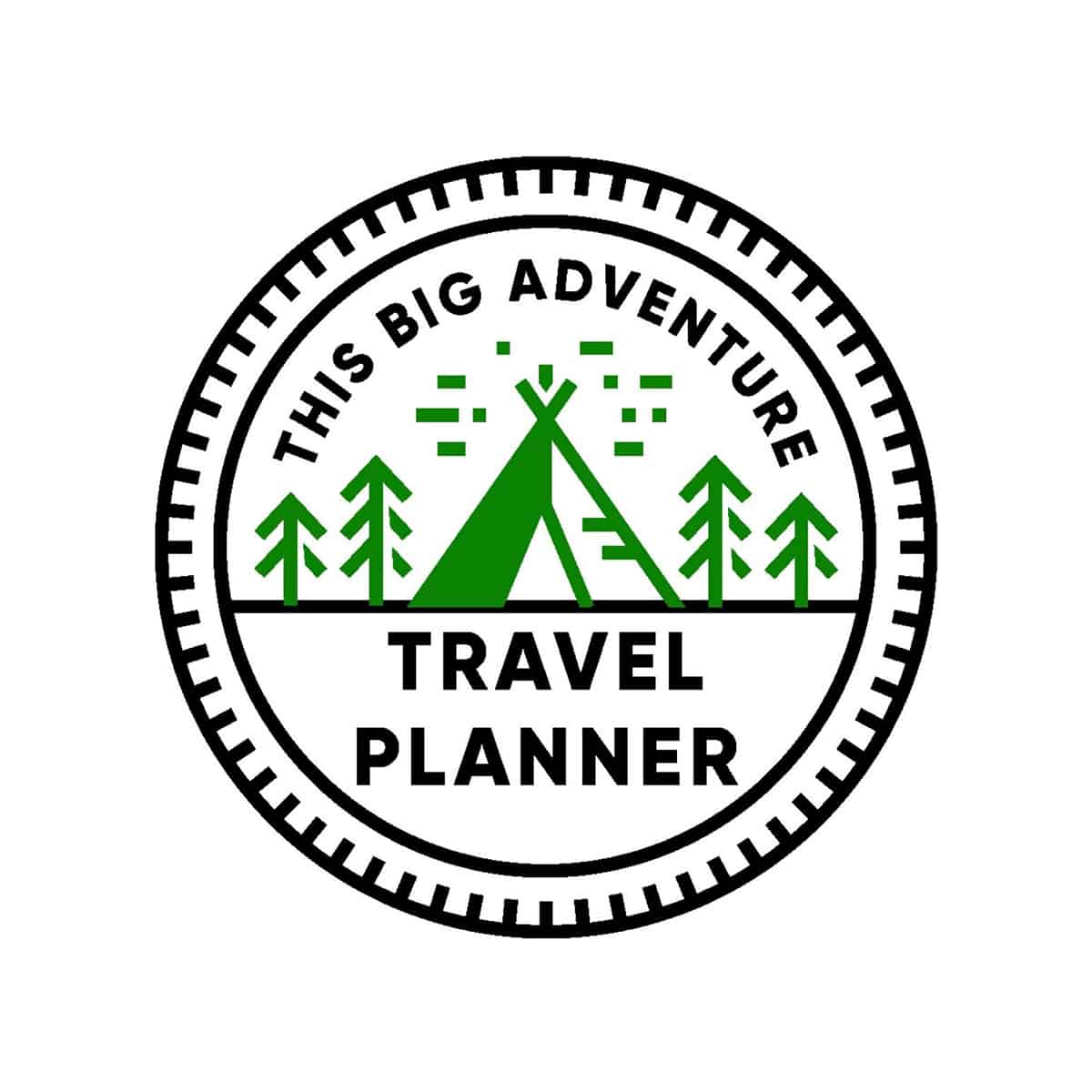
How to Use This Travel Planner:
- Download: Download the sheets that you want…individual pages or all of them, it’s up to you!
- Print: You can print them in colour or black and white on to letter sized paper. I set my printer to “Fill Page”. Often, I like to send kits like this off to get printed to a place like Staples…it’s inexpensive and the quality is so nice.
- If you like, you can keep all of the pages in a binder with sheet protectors.
- Get planning for your trip!
DOWNLOAD your FREE Travel Planner Here!
PIN IT for later!
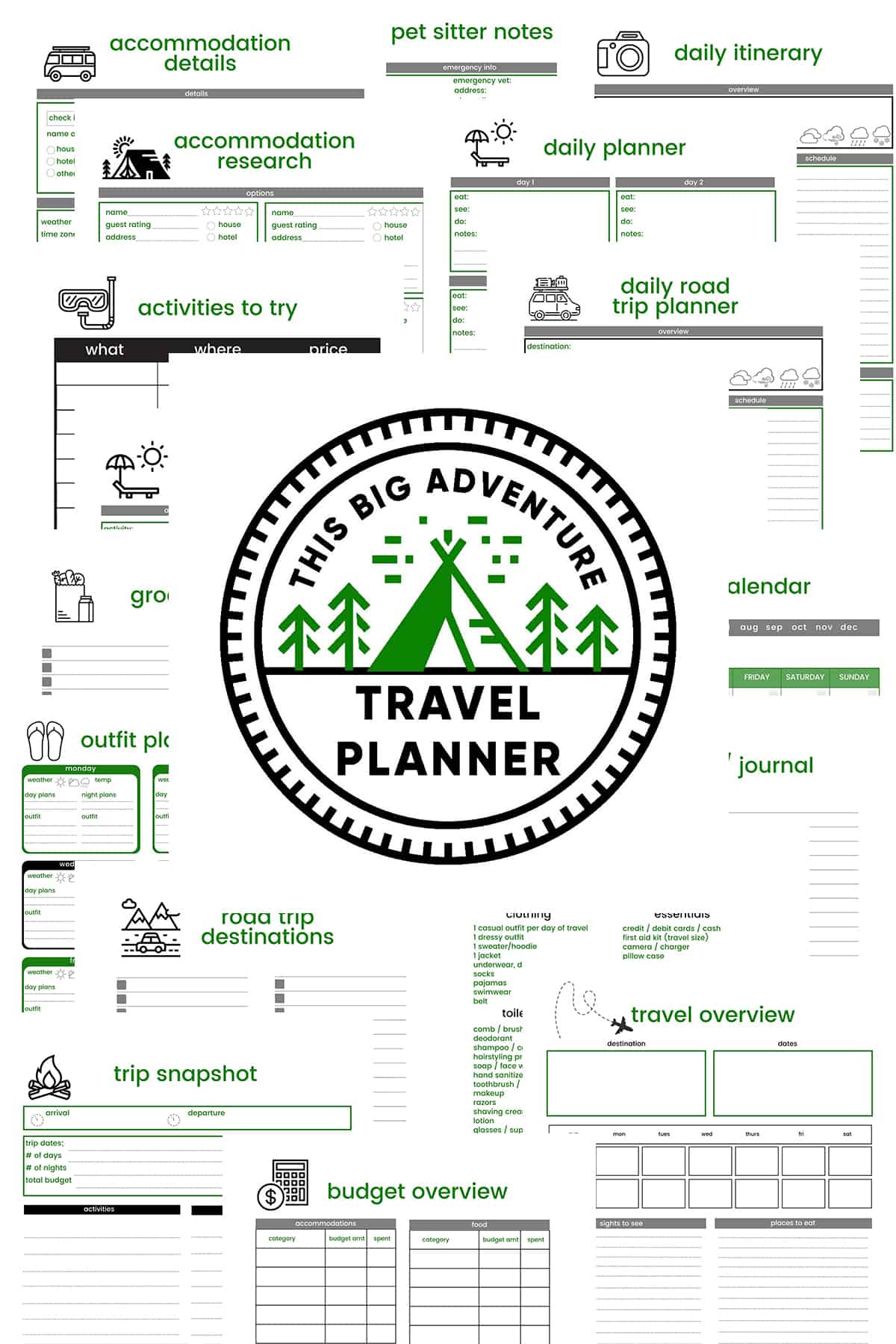
More FREE Printables!
- Camping Food List
- Camping Supplies Checklist
- Summer Road Trip Eye Spy for Kids
- What to Pack for a Houseboat Trip
- Snowshoe Checklist for Easy Treks
Happy Planning!
Similar Posts

150 Canadian Songs For Your #Canada150 Road Trip!
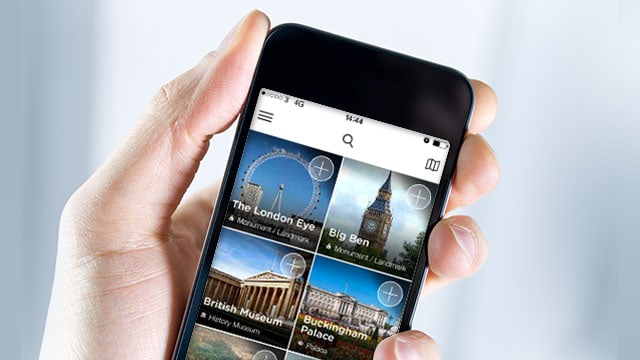
Get 1-7 Day Itineraries for 1,000+ Cities for Free with Visit A City

25 Genius Road Trip Tips for Parents
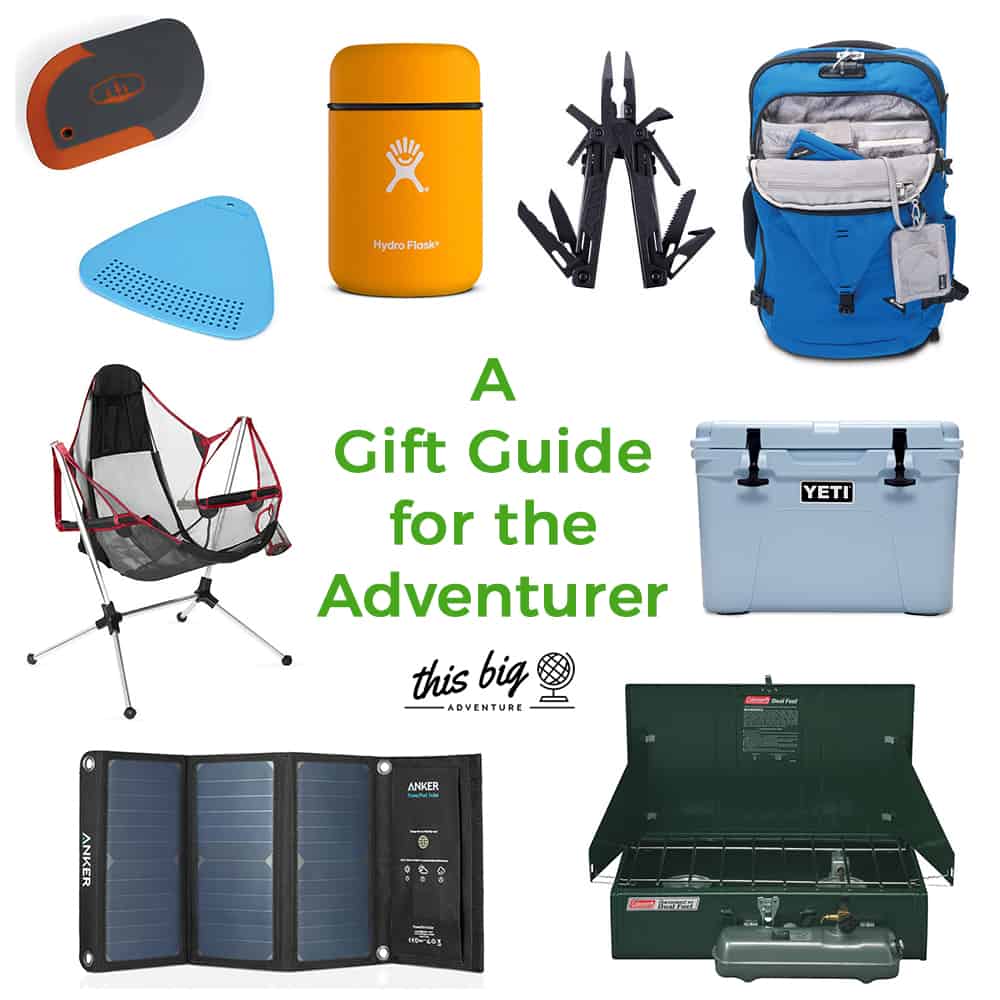
Gift Guide for the Adventurer!
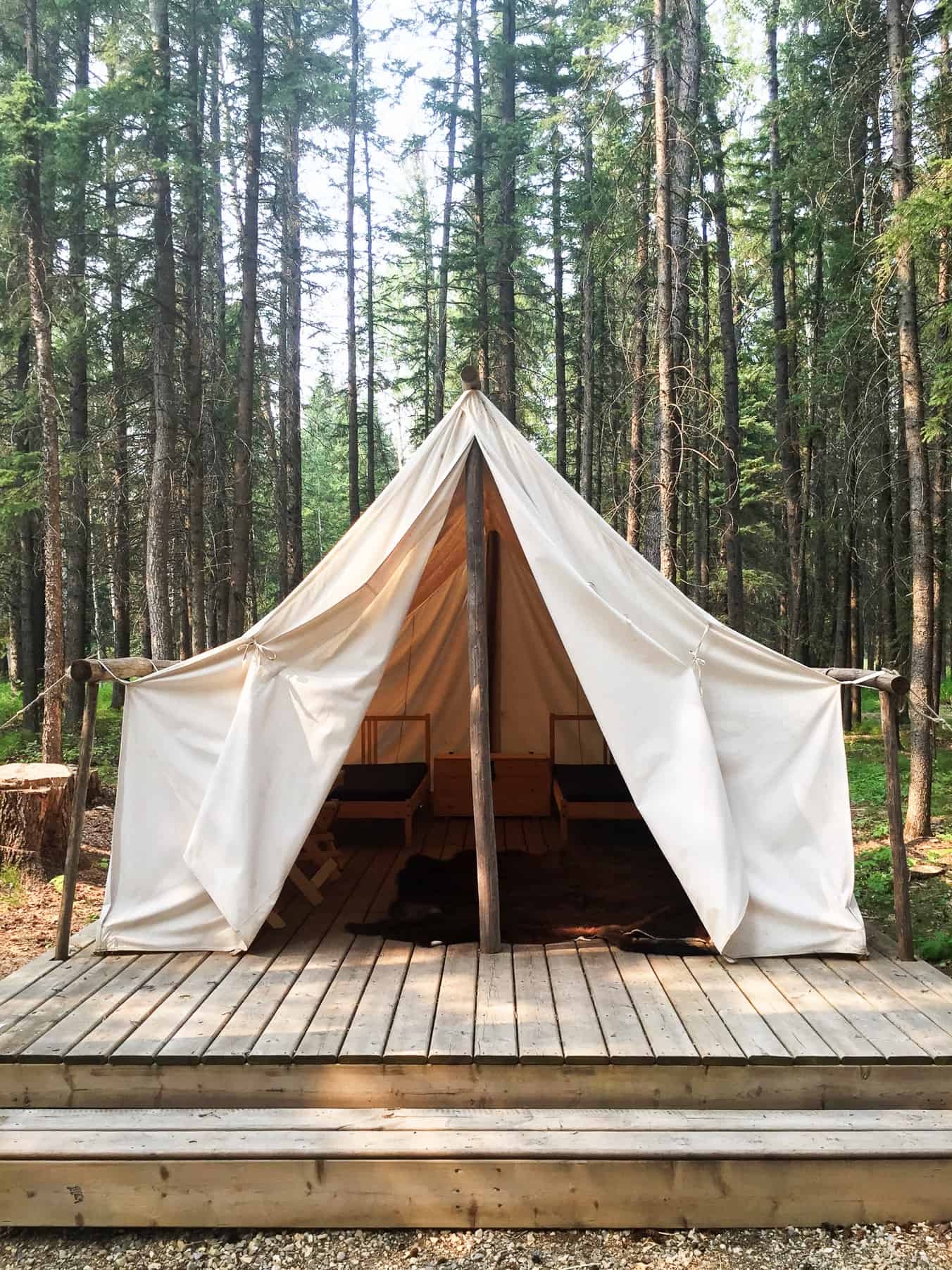
Tips for Staying in a Trapper’s Tent

Need Childcare in Jasper? There’s a Nanny for That
One comment.
Thank you so much!
Leave a Reply Cancel reply
Your email address will not be published. Required fields are marked *
Save my name, email, and website in this browser for the next time I comment.
Notify me via e-mail if anyone answers my comment.
Printable Road Trip Planner for your best vacation 2024
Here's your ultimate printable road trip planner, with 35+ worksheets, including planning pages, checklists, and packing lists for your perfect journey.

Road trips are an exciting way to explore new places and create unforgettable memories. However, without proper planning, a road trip can quickly become overwhelming and expensive.
That’s why we’ve created a printable road trip planner to help you stay organized and save money on your next adventure.
This planner includes sections for trip details, itinerary, packing list, budget, saving money, and meal planning.
Keep track of all your travel plans with this printable set of worksheets, checklists, and itineraries. You’ll be able to map out your next trip, budget your expenses, and make the most of your time on the road.
Let’s dive into the details and start planning your dream road trip!
BONUS! Get FREE printable road trip packing lists. From paper maps to snacks, from batteries to blankets, this free download will keep you from running around wondering what you forgot – because you won’t forget anything.
FREE Road Trip Packing Lists
Printable road trip planner, why do you need a printable road trip planner.
Whether you’re exploring a new part of the country or heading back to a favorite destination, there’s nothing quite like the feeling of hitting the open road.
But there are a LOT of details, and the best way to keep them organized is with a printable road trip planner.
The Local Tourist’s Printable Road Trip Planner is a set of worksheets, planning pages, and checklists designed to help you organize and plan your perfect adventure.
With over 35 pages of content, this printable road trip planner has everything you need to plan your trip, from dreaming up destinations to tracking your budget.
I have to tell you that I love the e-book and workbook. I am a big planner and all of the worksheets are like heaven to me. The meal planning and packing lists you provided are invaluable to me. I like to be prepared and your checklists pointed out so many items that I would not have thought of (until I needed them). Cindy Godsey
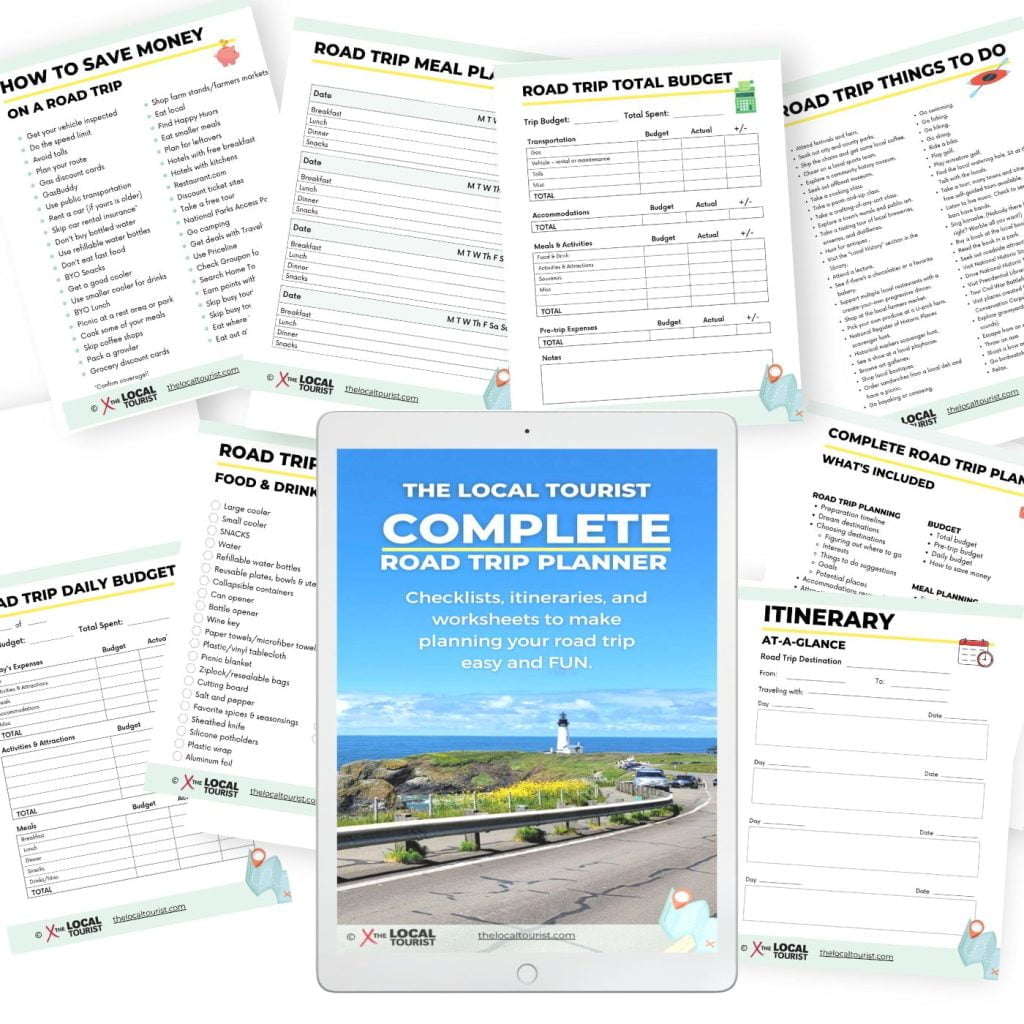
Here are just a few of the ways your Printable Road Trip Planner can help you plan your perfect adventure:
- Keep track of your preparations.
A good road trip takes planning, and this printable road trip planner can help you keep track of everything you need to do before you hit the road.
Use the preparation timeline to make sure you’re on track, and the pre-trip checklist to make sure you haven’t forgotten anything important.
- Dream destinations.
Are you looking for inspiration? The dream destinations page can help you brainstorm potential places to visit.
Once you have a few ideas, use the choosing destinations pages to evaluate your options and narrow down your choices.
- Plan your activities.
What do you want to do on your road trip? Use the interests and things-to-do suggestion pages to brainstorm activities and set achievable goals for your trip.
You can also use the attractions and restaurants research pages to plan out your stay and make sure you don’t miss any must-see sights or eateries.
- Stay organized.
With at-a-glance itinerary, accommodation, attraction, and restaurant pages, you’ll be able to keep all of your plans organized and easily accessible.
Use the distance log and daily itinerary pages to track your progress, and the total, pre-trip, and daily budget pages to stay on budget.
- Get inspired.
A printable road trip planner isn’t just a tool for organization—it’s also a source of inspiration.
Use the blank pages for notes and the two-column pages for easy organization to create a custom plan that reflects your unique style and interests.
This printable road trip planner is a great way to help you stay organized, stay on budget, and stay inspired as you plan your perfect adventure. It helps make this a fun process that’ll have you excited to take your amazing vacation.

TLTip: Print the pages you need and put them in a binder or folder, creating your own customized travel organizer.
Inside Your Ultimate Printable Road Trip Planner
Here’s everything you’ll get inside this printable road trip planner.

Preparation Timeline Worksheet
A preparation timeline worksheet helps you stay organized during your vacation planning and ensures that you don’t forget any important tasks.
For example, it’s a good idea to jot reminders to get your oil changed, ensure you have any necessary medications, or purchase travel insurance.
This timeline has space for last minute tasks up to those you should do two months before your trip.
Choosing your Road Trip Destinations
The first step in planning your road trip is figuring out where to go. Figuring out your travel itinerary also has the bonus of being one of the most fun parts of the experience.
Choosing your perfect road trip destinations can be overwhelming, but these planner pages make it easy.

Included in the planner are several worksheets dedicated to helping you choose your road trip destination, including listing your dream destinations, interests, and suggestions for things to do.
The Dream Destinations worksheet is a great starting point, inviting you to list all the places you have always wanted to visit. Think big and dream of far-off destinations that might not seem immediately attainable.
Looking for vacation ideas? Check out this guide to the most beautiful road trips in the USA .
It’s an excellent opportunity to brainstorm, and it’s helpful to keep this list for future trips.
With the Figuring Out Where To Go worksheet, you’ll answer a series of questions designed to help you hone in on your perfect destination. These include:
- What kind of trip you’d like to have
- When you’re going
- Your travel time each day
- The kind of roads you prefer
- What the weather will be
- Type of accommodations you like
When you fill out the What are your Interests worksheet, you’ll list what you and your fellow travelers enjoy doing. The worksheet helps you determine what kind of experiences you want to have on your road trip.
It’s basically a brain dump, and there’s a list of Things To Do on a Road Trip to get your imagination fired up.
For example, maybe you want to visit lesser-known National Parks, or seek out every World’s Largest you can find. This list is like a starter pack to get you planning a unique experience.

After you’ve made a list of your Road Trip Goals , like spending time with family or taking time for yourself, you’ll write down all your Potential Places .
By using these worksheets to choose your road trip destinations, you can ensure that you’re choosing places that align with your interests and align with the type of experience you’re looking for.
Accommodations, Attractions, and Restaurants Research
While part of the lure of a road trip is the ability to change plans when you see something unexpected, it’s also a good idea to research ahead of time.
In the road trip planner, you’ll find worksheets to help you keep track of your research for these key aspects of your trip.

The first worksheet is for Accommodations Research , which allows you to research and compare different hotels, motels, or vacation rentals for your trip. The worksheet includes columns for price, pros, and cons.
This can help you make an informed decision and find the perfect place to stay.
The second worksheet is for Attractions Research , where you can list and compare different attractions, landmarks, and activities that you want to experience on your road trip. When you find interesting places you’d like to visit, make a note in this planning page.
Finally, the third worksheet is for Restaurants Research . Compare dining options for your trip to help you plan where to eat and ensure that you have a great culinary experience.
By using these worksheets to research and organize your accommodation details, attractions, and restaurants, you can ensure that you make the most out of your road trip.
You can make informed decisions and avoid any unpleasant surprises, such as arriving at a hotel that doesn’t meet your expectations or a restaurant that doesn’t serve the type of food you like.
Road Trip Itineraries
Once you know where you’re going, it’s time to figure out when. An itinerary is one of the most important parts of the planning process for a successful road trip.
Even if you prefer to keep things loose, having a general idea of where you’ll be and when can make the whole experience smoother.

Because each person plans differently, there are several itinerary pages included in this ultimate road trip planner:
- Month calendar
- Itinerary at-a-glance
- Itinerary brainstorm
- Accommodations at-a-glance
- Attractions at-a-glance
- Restaurants at-a-glance
- Distance log
- Daily itinerary
- Daily planner
The planner includes a blank Month Calendar , an Itinerary At-a-Glance , and an Itinerary Brainstorm , so you can map out your trip and have a clear idea of what you want to do each day.
The planner also includes Accommodations At-a-Glance , Attractions At-a-Glance , and Restaurants At-a-Glance worksheets, so you can keep track of the places you plan to stay, visit, and dine at.
A Distance Log helps you keep track of the distance between destinations. The Daily Itinerary lets you keep track of weather, your route, and your confirmation numbers. Finally, with the Daily Planner , you can make the most of your time.
Road Trip Budget Worksheets
Ah, the budget. One of the least favorite, yet most essential aspects of planning a road trip. Making a budget, and sticking to it, can reduce any potential stress. Whether you have a little money or a lot, this is a vacation and you want to make it as easy as possible!
Your printable road trip planner includes several budget worksheets to help you manage your expenses and stay within your budget.
The Total Budget worksheet provides space for you to list all your expected expenses, such as gas, accommodations, attractions, and food.
The Pre-trip Budget worksheet allows you to plan and budget for expenses before you hit the road, such as buying any special attire you might need (rain slickers, hiking boots, etc), stocking up on supplies, and getting your vehicle serviced.
The road trip travel planner also includes a Daily Budget worksheet, which allows you to track your expenses on a daily basis. This worksheet includes sections for all of your daily expenses such as gas, food, and activities.
Additionally, the planner provides a cheat sheet of tips on how to save money on your road trip . It includes strategies to help you cut costs, such as packing snacks and meals, using discount coupons, and taking advantage of free attractions.
Road Trip Meal Planning
Food is a big part of your road trip. You have to eat, right? It’s also one of the biggest expenses.
With the road trip meal planning printables, you’ll find lots of ideas for breakfast, lunch, snacks, and dinner. Planning your meals helps keep your food costs down.
Snack Ideas provide suggestions for healthy and delicious snacks to pack for the road. Food for Meals is a packing list of ingredients you can take to make your own meals on the road, such as sandwiches, salads, and pasta dishes.

Meal Ideas offers inspiration and ideas for easy meals you can prepare during the trip.
Additionally, the planner provides a Road Trip Meal Planner worksheet, which allows you to plan your meals for the entire trip.
This worksheet includes sections for each meal of the day and allows you to plan your meals in advance, so you can enjoy delicious and healthy meals throughout the trip.
Road Trip Packing Lists
Before you hit the road, make sure you’ve got everything you need. There are several packing lists so you don’t forget any road trip essentials .
The planner includes a pre-trip checklist worksheet, which allows you to list all of the items you need to pack before you hit the road. This includes items such as chargers, medications, and travel documents.
The planner also includes separate packing lists for your vehicle, personal items, and food and drinks. The Vehicle Packing List includes items such as a first aid kit, jumper cables, and paper maps.

The Personal Packing List includes items such as clothing, toiletries, and entertainment. The Food and Drink Packing List makes sure you’re covered with snacks, water bottles, and coolers.
Additionally, there’s a Blank Packing List with space for notes, so you can customize your packing list based on your unique needs and preferences.
The Blank, Two-column Packing List allows you to list even more items.
By using these packing list worksheets, you can ensure that you have everything you need for the trip and avoid any unexpected surprises or setbacks.
Download Your Ultimate Printable Road Trip Planner Today!
This printable road trip planner is an invaluable tool for anyone planning a road trip.
With over 35 printable worksheets, including planning pages, checklists, and packing lists, this planner provides a comprehensive guide to help you plan and organize every aspect of your trip.
From choosing destinations and researching accommodations, attractions, and restaurants to planning meals, budgets, and packing lists, this planner has everything you need to create a successful and enjoyable road trip experience .
If you’re planning a road trip and want to make sure you have everything you need to enjoy the journey, then this printable road trip planner is the perfect resource for you.
You can buy and download the planner for only $10, and it’s available immediately upon purchase. So don’t wait any longer, get your printable road trip planner today and start planning your perfect road trip!
How to plan a road trip. With actual paper, even.
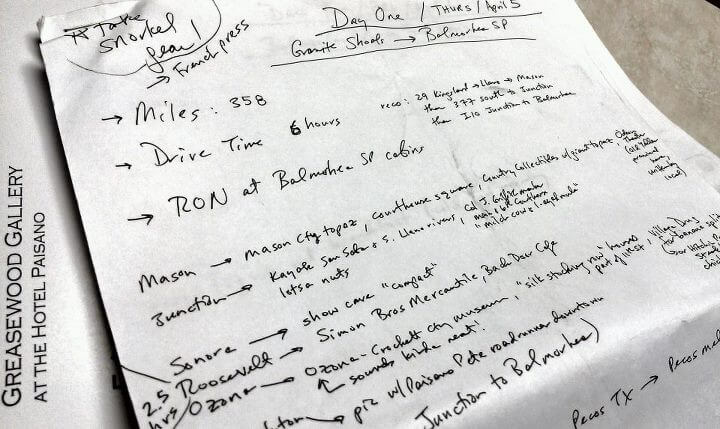
Despite my enjoyment of technology, social communications and apps for travel , there’s one area where paper still trumps trons for me.
Planning for multi-day road trips.
Since I’ve just returned from such a journey with my parents (for which I loved playing tour guide but felt I needed to have options for everything) I thought I’d describe the process that has worked for me for getting the most out of each day of travel while still allowing plenty of discovery time.
Here’s how I do it:
1) Get the big picture with a map . I do use Google Maps both on a laptop and a phone, but for big trips, a paper map is so much easier to spread out on a table and study with fellow travelers. I’ll run my proposed route through an online mapping site, get an idea for how many miles and how many days it will take, then look at a paper map. That’s usually when I’ll notice a state park or some other gotta-see near the route, and start adding detours. I am all about the detours.
2) Lay out your proposed route as a rough itinerary . Depending upon the time available, decide how many miles you can comfortably drive each day, allowing for driver fatigue, bathroom breaks, serendipity stops and meals. Can you get on the road, breakfast eaten, by about 8 or 9 a.m., then drive till noon or one? After lunch, how much more can you keep trucking until it’s Hotel Time? Some days you’ll dawdle and won’t get too far because there are so many things to see, and other days will be “Get In, Strap In and Add Lots of Miles to the Odometer.”
3) Add waypoints to your rough itinerary ; something like, “Day One – Hometown to X City – overnight in X hotel. Day Two – X City to Y National Park – overnight in park cabins (need reservations!) Day Three – Y National Park to Z Small Town With Awesome Drugstore Soda Fountain….” and so on.
4) Key To Road Trip Success – one sheet of paper for each day . This is what makes you a planning genius. Take one piece of unlined, blank paper for each day of the trip and write the day of the week and date at the top. Using your rough itinerary, lay out where you start and where you finish for each day, with approximate number of driving miles and driving hours. Based on where you’ll be that day, list the attractions that you’d like to see, scenic drives to take and unique local restaurants where you’d like to eat. THAT is when you discover that, say, Hellen Keller’s Alabama home at Ivy Green (or some other literary travel destination ) doesn’t open on Sunday until 1 pm, and you’d planned to have your tour complete and be on the road from there by noon. Whoops.
5) Tweak and revise . When is that famous BBQ place closed? When does that excellent museum have late hours with reduced entrance prices? Are you going to be in X City on the same night as a concert or maybe a home game at their local Triple-A ballpark? I know all this might seem like a lot of trouble, but why take the chance that you’ll pull up to some place, all excited, and find that (D’oh!) it is closed on Tuesdays? List everything you’d possibly like to do in each place on each day, so if there’s some crisis or you finish early somewhere, your list of possibilities is right there to choose from.
6) Why not do all this on a phone or tablet? Because some advance work (plus paper notes that always boot up and are pretty indestructible) saves you time, avoids roaming charges and helps prevent aggravated teeth-gnashing because of slow data rates and sites timing out when you need info. I used Yelp to find a backup dinner spot when a place in my notes was unexpectedly closed, but it wasn’t always my starting point, and I was lucky that I had a decent signal at the time.
7) Set up a playlist of music to match the journey . OK, this is WAY over-the-top planning for many (sorry, can’t help myself!) but I love to put together a digital “mix tape” of music that matches the destinations. For example, I chose Tennessee Waltz , Rocky Top , Tennessee Flat Top Box and Arrested Development’s Tennessee to play as we drove through the Volunteer State.
What are your favorite road trip planning tips? Please share in the comments below.
(If you like this post, please consider subscribing to the blog via RSS feed or by email – the email signup link is at the top of the right sidebar near the Search box. Thanks!)
Related posts:
About the author.
Sheila Scarborough
I'm a writer, speaker, and trainer specializing in tourism and social media. Co-founder of Tourism Currents. U.S. Navy veteran. Caffeinated.
Sometimes, even in this age of all things tech you can’t beat an old school Pen and paper.
I also love paper because you can connect the dots in ways it’s hard to do otherwise, like with arrows and boxes and post-it notes. You hit the nail on the head with the boot-up and signal issues too. I’ve seen people freak out to the point where I thought they were going to literally pull their hair out because that oh-so-important document is in the cloud somewhere and they can’t get to it. Or their iPhone ran out of power like it does EVERY DAY when you’re traveling. You don’t need to be a slave to an outlet this way—same with printed airline itineraries and hotel/car confirmations.
I really don’t think pen and paper will ever go out. I appreciated this article. I’m sure Sheila’s folks appreciated being able to read the plans on paper. In our family, Mr. Bruce, age 76, thinks and reasons slower. I use a combination of resource much like Sheila, but nothing written in stone.
Thanks for the comments, everyone!
I saw a tweet by someone who was wondering why mind-mapping software hadn’t really taken off, and I thought immediately, “Because the easiest way to mind-map is to get a big sheet of paper and go to town with arrows, squigglies, starts, Post-its, etc., not fiddle around waiting for current software to match the brain-hand connection.”
Tech is GREAT, y’all know I love it, but it’s only a tool, and not always the best one.
I’m a big fan of planning on paper too. Sheila, for your next Tennessee road trip, you need to add O Cumberland by Matraca Berg. That’s the river that winds through Nashville and other parts of middle Tennessee, and it’s fine song. On her album called The Dreaming Fields.
Thanks, Kerry, will do!
Leave a Reply Cancel Reply
Save my name, email, and website in this browser for the next time I comment.
This site uses Akismet to reduce spam. Learn how your comment data is processed .

IMAGES
VIDEO
COMMENTS
Study with Quizlet and memorize flashcards containing terms like Trip planning is an essential part of the driving experience., Helpful trip planning guidelines include:, It is generally OK to drive even if you are distressed, have been drinking, or taken medications that might interfere with operation of a motor vehicle. and more.
TRIP PLANNING. The following planning tips can be used as a starting place to help you stay safer on the road: Plan your trip out in advance. Have your vehicle checked out by a qualified mechanic before you leave. Wear your seat belt. Seat belts are the most significant safety device ever invented. Avoid rush hour traffic if at all possible.
7. Finish getting ready at home - instead of once you get on the road. 6. Snack smart. If possible, eat meals or snacks before or after your trip, not while driving. On the road, avoid messy foods that can be difficult to manage. 5. Secure children and pets before getting underway. If they need your attention, pull off the road safely to care ...
Protect yourself and others on the road with these skills. Stay safe while driving. Despite fewer people on the road, deaths from collisions increased by an estimated 8 percent in 2020, according to the nonprofit National Safety Council. As traffic dissipated, reckless driving became increasingly common across the country.
Top 9 Tips for a Safe Road Trip. These can't miss tips are the most important pieces of advice for safely planning your next road trip. Get a diagnostic check: Make sure your vehicle is up to date on oil changes, tire rotations, and scheduled maintenance. Check the air in the tires, take a look at belts and hoses, measure fluid levels, check ...
How to Preserve Your Driving Skills When You're Driving Less. Create a training regimen to keep yourself mentally, physically fit for defensive driving. If you can't go out, don't just sit around the house. Do little things, like reaching into cupboards or stretching, to keep yourself flexible and alert, experts say. MoMo Productions/Getty Images.
a. recreational areas. blue, white, and red signs are used to indicate. a. interstates. Study with Quizlet and memorize flashcards containing terms like True or False Trip planning is an essential part of the driving experience, Helpful trip planning guidelines include:, True or False: It's generally OK to drive even if you are distressed, have ...
Here are 10 ways to be better prepared when you travel in 2022. 1. Book your trip at least two to three months in advance (more if you're going abroad). Most experts agree that booking a flight at least four weeks in advance—ideally six to eight weeks before travel—is key to getting a better deal and could save travelers as much as 51 ...
Save the delays with trip planning tips: Driver's Education. Dale Carnegie famously said, "An hour of planning can save you 10 hours of doing.". In the business of driving a truck, when hours and minutes can really count, careful planning can help prevent unplanned 10-hour layovers. While Carnegie probably never mapped out a 13-drop trip ...
Journey management is a 2-part process that aims to prevent crashes and injuries by minimizing exposure to driving-related hazards. It starts by deciding whether driving is necessary. It explores alternatives that would allow drivers to skip getting behind the wheel. Not driving is always the safest option, since crashes are the leading cause ...
Safe Driving Tip #2: Make Sure Everyone Wears A Seatbelt for Safety. Wearing a seatbelt is one of the simplest yet most effective safe driving habits. It can reduce the risk of severe injuries or fatalities in an accident. Ensure everyone in the vehicle wears a seatbelt; even those in the back seat.
Pre-set your favorite radio stations. Load your favorite CD before you start driving. Refrain from eating, drinking and smoking. Know your route before starting out, so that you do not need to consult a map or directions during the trip. Set up your GPS-based navigation device and adjust the volume control.
3. Ensure There Are No Distractions. Not having your focus on the road is one of the greatest risks while driving and the reason this is one of our top road safety tips. Keep your attention 100% on the road at all times. Trying to multitask is one of the reasons why road trips can be dangerous.
Plan Your Trip Wisely. The best thing you can do when taking a road trip is to plan your trip. If you know the best times to drive and the details of your route, you'll be able to reduce your risk of accident. There are several things to keep in mind when planning your trip, here are a few of them: Prepare your car. Simple car maintenance can ...
Tips to avoid being a distracted driver. Fully focus on driving. It may seem obvious, but making driving your priority can cut down on the risk of distractions. Before you start the car, make sure your navigation is programed, your entertainment or music set up, and you've already contacted anyone who may need to know your arrival time.
One of the best ways to prevent fatigue while driving on a long trip is to: a. Take food along so you can avoid drive-through restaurants b. Play the radio at high volume c. Leave early (3 A.M. to 5 A.M.), eat regular meals and drive at the speed limit d. Stop, get out of the vehicle and walk around for at least ten minutes every two hours
While time constraints are important to consider while you're on the road, safety is king. So be patient, plan ahead, and remember that you're sharing the road with others. 6) Avoid Speeding. When the open road is calling your name, it can be tempting to want to press down a little harder on that pedal.
With this guide on planning a driving trip, you'll have the information you need to ensure a seamless and memorable trip! How to Plan a Driving Trip: Easy-to-Follow Steps. Step 1: Choose Your Destination. Step 2: Map Out Your Route. Step 3: Book Ahead. Step 4: Pack Road Trip Essentials. Step 5: Prep Your Vehicle.
If you're trying to prevent drowsy driving, avoid these tactics. Eating while driving. If you think that munching on your favorite road-trip snacks will help keep you alert behind the wheel, think again. Eating or drinking while driving—even if it's guzzling an energy drink—actually makes the problem worse.
Use Wanderlog to share your itinerary with tripmates, friends, and families and collaborate in real time, so everyone stays in the loop. Plan your road trip or vacation with the best itinerary and trip planner. Wanderlog travel planner allows you to create itineraries with friends, mark routes, and optimize maps — on web or mobile app.
All the things that need done before travelling and road trips can feel overwhelming. But you can help manage all the planning stress by writing it down! Today we're sharing 23 pages in our FREE 'This Big Adventure Travel Planner'. Just download the sheets you want to use, print them out and you're one step closer to a stress free trip!
Printable Road Trip Planner for your best vacation 2024. January 9, 2024 by Theresa Goodrich. Here's your ultimate printable road trip planner, with 35+ worksheets, including planning pages, checklists, and packing lists for your perfect journey. Road trips are an exciting way to explore new places and create unforgettable memories.
4) Key To Road Trip Success - one sheet of paper for each day. This is what makes you a planning genius. Take one piece of unlined, blank paper for each day of the trip and write the day of the week and date at the top. Using your rough itinerary, lay out where you start and where you finish for each day, with approximate number of driving ...